A State-of-the-Art Review on Micro-Machining of Nitinol Shape Memory Alloys and Optimization of Process Variables Considering the Future Trends of Research
Abstract
1. Introduction
2. Nickel–Titanium (NiTi) SMAs
3. Applications of NiTi SMAs
4. Surface Integrity Analysis
5. Conventional Micro-Machining of NiTi SMAs
5.1. Micro-Milling
5.2. Micro-Grinding
6. Non-Conventional Micro-Machining of NiTi SMAs
6.1. Abrasive Water Jet Machining (AWJM)
6.2. Micro-Electrical Discharge Machining (µ-EDM)
6.3. Laser Beam Machining (LBM)
6.4. Electrochemical Micro-Machining (ECMM)
6.5. Electrochemical Polishing (ECP)
6.6. Hybrid Machining
7. Optimization of Micro-Machining Process Parameters for NiTi SMAs
8. Critical Observations
9. Future Scope
- The influence of machining parameters such as cutting depth, cutting width, machining strategy, and cutting velocity on responses such as burr formation, surface properties, cutting force, surface roughness, and flank wear is investigated using micro-milling of NiTi SMAs. Limited work has been done to upgrade the micro-structure and monitor the phase transition temperature of NiTi SMAs in the micro-milling process.
- The chemical composition of NiTi SMAs varied phase transformation temperature as well as surface morphology. Very few studies have been published to determine the effect of the chemical compositions of NiTi SMAs on the surface integrity after the micro-machining process. The selection of optimum chemical composition will help to boost the micro-machinability of NiTi SMAs.
- Very few studies have been carried out to evaluate the influence of micro-machining variables on the phase transition temperature of NiTi SMAs. Therefore, it will be needed to determine the effect of machining variables on the phase transformation temperature of NiTi SMAs.
- Some important material properties like density, workpiece thickness, homogeneity, etc., are not considered as the machining variables during micro-machining of NiTi SMAs. The consideration of these properties would be beneficial for the industry.
- Limited studies were conducted to evaluate the effect of post-machining processes like short peening, deburring, ball burnishing, etc., on the surface integrity of NiTi SMAs for reducing the residual stresses. Therefore, this area needs to be investigated in the future.
- The single-layer coating on the tool and MQL system is developed to increase the tool life during micro-milling of NiTi SMAs. The multi-layer coating and texturing on the cutting tool would be a future trend. The tool life can also be increased by improving the design of the tool holder and cutting insert during micro-milling of NiTi SMAs.
- Most of the research is either conventional or non-conventional micro-machining of NiTi SMAs, considering one factor at a time. However, in the actual scenario, multiple factors are changed with a single machining parameter at the same time. Therefore, multi-response optimization of machining parameters would be a future trend for solving this problem.
- Many of the studies did not use any optimization technique throughout the micro-machining of NiTi SMAs. Many advanced optimization methods, such as PSO, RSM, fuzzy logic, GA, PCA, etc., can be applied to accelerate the micro-machinability of NiTi SMAs.
- µ-EDM of NiTi SMAs investigates the effect of capacitance, discharge voltage and electrode material on the MRR, TWR, Ra, and drilled micro-hole dimensional accuracy. Minimal research has been carried out to determine the effect of waveform, polarity, dielectric fluid, table feed rate and discharge current on all the μ-EDM responses for NiTi SMAs.
- Very few studies represent the influence of dielectric-based properties like flushing pressure, types of dielectrics, etc., on the response parameters during micro-EDM of NiTi SMAs. The use of powder-mix dielectrics, gaseous dielectrics (oxygen, argon), and MQL-based dielectric systems during µ-EDM of NiTi SMAs was hardly found in the literature. Therefore, research is needed to determine the influence of these dielectric systems on the processing of NiTi SMAs during µ-EDM.
- Limited literature reported the influence of the electrode shape and size on the output responses during µ-EDM of NiTi SMAs. Therefore, there will be a requirement to determine the influence of various electrode shapes (triangular, square, rectangular, etc.) and sizes on the response variables of NiTi SMAs in µ-EDM.
- The formation of a white layer on the machined surface after µ-EDM of NiTi SMAs was hardly found in the literature. Therefore, a comprehensive investigation will be needed to calculate the influence of µ-EDM variables on the WLT thickness of the machined surface.
- Limited investigation about the usage of a cryogenically treated electrode was carried out to process NiTi SMAs in µ-EDM. As a result, the impact of the cryogenically treated electrode on post-machining features of NiTi SMAs such as phase transition temperature, micro-structure, and so on will need to be investigated.
- Limited research was carried out to establish the influence of machining variables on the phase transition temperature of NiTi SMAs during non-traditional micro-machining processes. Some more investigation will be needed in this area.
- The micro-machinability of NiTi SMA can also be improved by varying the electrode diameter and specification in an efficient manner during the µ-EDM process.
- Minimal research took place to discover the effect of laser frequency and wavelength on surface characteristics of NiTi SMAs.
- Minimum research was carried out for improving the electrolyte solution during ECMM of NiTi SMA. An improved electrolyte can enhance the surface quality of NiTi SMA at the micro-level. Therefore, further investigation will be required in this area.
- There are inadequate data found for the residual stress generated on the micro-machined surface of NiTi SMAs. Evaluation of SME before and after micro-machining will be a future trend for NiTi SMAs.
- Very few investigations on the μ-EDM and LBM of NiTi SMAs prepared through the method of powder metallurgy have been published.
10. Conclusions
Funding
Data Availability Statement
Conflicts of Interest
Abbreviations
| ABC | Artificial Bee Colony Algorithm |
| AJM | Abrasive Jet Machining |
| Af | Austenite finish temperature |
| ANOVA | Analysis of Variance |
| ANN | Artificial Neural Network |
| As | Austenite start temperature |
| AWJM | Abrasive Water Jet Machining |
| µ-AWJM | Micro-Abrasive Water Jet Machining |
| μ-AWJ | Micro-Abrasive Water Jet |
| Au-Cd | Gold-Cadmium |
| BCC | Body Centered Cubic |
| CBN | Cubic Boron Nitride |
| CELT | Confined Etchant Layer Technique |
| CO2 | Carbon dioxide |
| CPE | Composite Electrolyte |
| 3D | Three Dimensional |
| DOF | Degrees of Freedom |
| DSC | Differential Scanning Calorimetry |
| µ-EDM | Micro- Electrical Discharge Machining |
| ECMM | Electro Chemical Micro-Machining |
| EDM | Electrical Discharge Machining |
| ECM | Electrochemical Machining |
| EBM | Electron Beam Machining |
| ECP | Electrochemical Polishing |
| FL | Fuzzy Logic |
| GA | Genetic Algorithm |
| GRA-PCA | Grey Relational Analysis Coupled with Principal Component Analysis |
| HAZ | Heat Affected Zone |
| He | Helium |
| H2SO4 | Sulfuric acid |
| H3PO4 | Phosphoric acid |
| IEG | Inter Electrode Gap |
| IVC | Inferior Vena Cava |
| LBM | Laser Beam Machining |
| LEDM | Laser Electro Discharge Machining |
| MEMS | Micro-Electro-Mechanical-System |
| Mf | Martensite finish temperature |
| MQL | Minimum Quality Lubrication |
| MRR | Material Removal Rate |
| Ms | Martensite start temperature |
| MOGA | Multi-Objective Genetic Algorithm |
| NiTi | Nickel-Titanium |
| NC | Numerical Control |
| Nd: YAG | Neodymium-doped Yttrium–Aluminum–Garnet |
| Ne | Neon |
| NiTiO3 | Nickel titanate |
| NaOH | Sodium hydroxide |
| NaCl | Sodium chloride |
| NaNO2 | Sodium nitrate |
| Na2C4H4O6 | Sodium tartrate |
| NPE | Non-Passivating Electrolyte |
| OWSME | One-Way Shape Memory Effect |
| PCA | Principal Component Analysis |
| PE | Passivating Electrolyte |
| PSO | Particle Swarm Optimization |
| PVD | Physical Vapor Deposition |
| Ra | Arithmetic mean surface roughness |
| RSM | Response Surface Methodology |
| SMA | Shape Memory Alloy |
| SME | Shape Memory Effect |
| SE | Superelastisity |
| SEM | Scanning Electron Microscopy |
| SPECMM | Short Pulse Electrochemical Micro-Machining |
| S/N ratio | Signal to Noise ratio |
| SOD | Standoff Distance |
| TWSME | Two-Way Shape Memory Effect |
| TEM | Transmission Electron Microscopy |
| TWR | Tool Wear Rate |
| TOPSIS | Technique for Order of Preference by Similarity to Ideal Solution |
| Ti-6Al-4V | Titanium alloy |
| TiO2 | Titanium oxide |
| TiCl4 | Titanium tetrachloride |
| TiAlN | Titanium aluminum nitride |
| µ-USM | Micro-Ultrasonic Machining |
| UAµ-EDM | Ultrasonic-assisted Micro-Electrical Discharge Machining |
| VGC | Variable Geometry Chevron |
| µ-WJM | Micro-Water Jet Machining |
| WEDM | Wire Electro-Discharge Machining |
| WJM | Water Jet Machining |
References
- Gentili, E.; Tabaglio, L.; Aggogeri, F. Review on micro-machining techniques. In Kuljanic E, editors. AMST’05 Advanced Manufacturing Systems and Technology. CISM Int. Cent. Mech. Sci. (Courses Lect.) 2005, 486, 387–396. [Google Scholar] [CrossRef]
- Özel, T. Editorial: Special Section on Micromanufacturing Processes and Applications. Mater. Manuf. Process. 2009, 24, 1235. [Google Scholar] [CrossRef]
- Cardoso, P.; Davim, J.P. A brief review on micromachining of materials. Rev. Adv. Mater. Sci. 2012, 30, 98–102. [Google Scholar]
- Madou, M.J. Fundamentals of Microfabrication; CRC Press: Boca Raton, FL, USA, 2002; pp. 1–752. [Google Scholar] [CrossRef]
- Weck, M.; Fischer, S.; Vos, M. Fabrication of micro components using ultra precision machine tools. Nanotechnology 1997, 8, 145–148. [Google Scholar] [CrossRef]
- Lang, W. Reflexions on the future of microsystems. Sens. Actuators 1999, 72, 1–15. [Google Scholar] [CrossRef]
- Leo Kumar, S.P.; Jerald, J.; Kumanan, S.; Prabakaran, R. A Review on Current Research Aspects in Tool Based Micromachining Processes. Mater. Manuf. Process. 2014, 29, 1291–1337. [Google Scholar] [CrossRef]
- Griffiths, B. Manufacturing Surface Technology. In Surface Integrity and Functional Performance; Penton Press: London, UK, 2001. [Google Scholar]
- Davim, J.P. (Ed.) Surface Integrity in Machining, 1st ed.; Springer: London, UK, 2010. [Google Scholar]
- Hassan, M.R.; Mehrpouya, M.; Dawood, S. Review of the machining difficulties of nickel titanium based shape memory alloys. Appl. Mech. Mater. 2014, 564, 533–537. [Google Scholar] [CrossRef]
- Wu, S.K.; Lin, H.C.; Chen, C.C. A study on the machinability of a Ti49.6Ni50.4 shape memory alloy. Mater. Lett. 1999, 40, 27–32. [Google Scholar] [CrossRef]
- Weinert, K.; Petzoldt, V. Machining of NiTi based shape memory alloys. Mater. Sci. Eng. A 2004, 378, 180–184. [Google Scholar] [CrossRef]
- Chang-jun, Q.; Pei-sun, M.; Qin, Y. A prototype micro-wheeledrobot using sma actuator. Sens. Actuators A Phys. 2004, 113, 94–99. [Google Scholar] [CrossRef]
- Velmurugan, C.; Senthilkumar, V.; Dinesh, S.; Arulkirubakaran, D. Machining of NiTi-shape memory alloys—A review. Mach. Sci. Technol. 2018, 22, 355–401. [Google Scholar] [CrossRef]
- Manjaiah, M.; Narendranath, S.; Basavarajappa, S. Review on non-conventional machining of shape memory alloys. Trans. Nonferrous Met. Soc. China 2014, 24, 12–21. [Google Scholar] [CrossRef]
- Kaya, E.; Kaya, İ. A review on machining of NiTi shape memory alloys: The process and post process perspective. Int. J. Adv. Manuf. Technol. 2019, 100, 2045–2087. [Google Scholar] [CrossRef]
- Zadafiya, K.; Dinbandhu Kumari, S.; Chatterjee, S.; Abhishek, K. Recent trends in non-traditional machining of shape memory alloys (SMAs): A review. CIRP J. Manuf. Sci. Technol. 2021, 32, 217–227. [Google Scholar] [CrossRef]
- Mwangi, J.W.; Nguyen, L.T.; Bui, V.D.; Berger, T.; Zeidler, H.; Schubert, A. Nitinol manufacturing and micromachining: A review of processes and their suitability in processing medical-grade nitinol. J. Manuf. Process. 2019, 38, 355–369. [Google Scholar] [CrossRef]
- Bengisu, M.; Ferrara, M. Materials that Move: Smart Materials. Intelligent Design; Springer: Berlin/Heidelberg, Germany, 2018. [Google Scholar]
- Chopra, I.; Sirohi, J. Smart Structures Theory, Shape Memory Alloys (SMAs); Cambridge University Press: Cambridge, UK, 2013; pp. 194–304. [Google Scholar] [CrossRef]
- Simha, N.K.; Rama Sreekanth, P.S.; Venkata Siva, S.B. Shape-Memory Alloys, Reference Module in Materials Science and Materials Engineering; Elsevier: Amsterdam, The Netherlands, 2017. [Google Scholar] [CrossRef]
- Olander, A. An electrochemical investigation of solid cadmium-gold alloys. J. Am. Chem. Soc. 1932, 54, 3819–3833. [Google Scholar] [CrossRef]
- Buehler, W.J.; Gilfrich, J.V.; Wiley, R.C. Effect of low-temperature phase changes on the mechanical properties of alloys near composition TiNi. J. Appl. Phys. 1963, 34, 1475–1477. [Google Scholar] [CrossRef]
- Kaynak, Y.; Karaca, H.E.; Noebe, R.D.; Jawahir, I.S. Analysis of tool-wear and cutting force components in dry, preheated and cryogenic machining of NiTi shape memory alloys. Procedia CIRP 2013, 8, 498–503. [Google Scholar] [CrossRef]
- Elahinia, M. Shape Memory Alloy Actuators: Design, Fabrication and Experimental Evaluation, 1st ed.; John Wiley and Sons: Oxford, UK, 2016. [Google Scholar]
- Kaynak, Y.; Karaca, H.E.; Jawahir, I.S. Cutting speed dependent microstructure and transformation behavior of NiTi alloy in dry and cryogenic machining. J. Mater. Eng. Perform. 2015, 24, 452–460. [Google Scholar] [CrossRef]
- Delaey, L. Diffusionless transformations. In Materials Science and Technology; Wiley-VCH Verlag GmbH & Co. KGaA: Weinheim, Germany, 2006; pp. 587–654. [Google Scholar] [CrossRef]
- Elahinia, M.H.; Hashemi, M.; Tabesh, M.; Bhaduri, S.B. Manufacturing and processing of NiTi implants: A review. Prog. Mater. Sci. 2012, 57, 911–946. [Google Scholar] [CrossRef]
- Kumar, P.K.; Lagoudas, D.C. Introduction to shape memory alloys. In Shape Memory Alloys; Springer: Chambersburg, PA, USA, 2008; pp. 1–5. [Google Scholar] [CrossRef]
- Resnina, N.; Belyaev, S.; Shelyakov, A.; Ubyivovk, E. Violation of the sequence of martensite crystals formation on cooling and their shrinking on heating during B2↔B19ʹ martensitic transformation in Ti40.7Hf9.5Ni44.8Cu5 shape-memory alloy. Phase Transit. 2017, 90, 289–298. [Google Scholar] [CrossRef]
- Motemani, Y.; Nili-Ahmadabadi, M.; Tan, M.J.; Bornapour, M.; Rayagan, S. Effect of cooling rate on the phase transformation behavior and mechanical properties of Ni-rich NiTi shape memory alloy. J. Alloys Compd. 2009, 469, 164–168. [Google Scholar] [CrossRef]
- Ma, J.; Karaman, I.; Noebe, R.D. High temperature shape memory alloys. Int. Mater. Rev. 2010, 55, 257–315. [Google Scholar] [CrossRef]
- Perkins, J.; Hodgson, D. The two-way shape memory effect. In Engineering Aspects of Shape Memory Alloys; Elsevier: Amsterdam, The Netherlands, 1990; pp. 195–206. [Google Scholar] [CrossRef]
- Fremond, M.; Miyazaki, S. Shape Memory Alloys; Springer: Berlin/Heidelberg, Germany, 2014; Volume 351. [Google Scholar] [CrossRef]
- Stoeckel, D.; Tinschert, F. Temperature compensation with thermovariable rate springs in automatic transmissions (No. 910805). SAE Tech. Pap. 1991, 30, 35–42. [Google Scholar] [CrossRef]
- Sharma, N.; Raj, T.; Jangra, K.K. Applications of nickel-titanium alloy. J. Eng. Technol. 2015, 5, 1. [Google Scholar] [CrossRef]
- Sanusi, K.O.; Ayodele, O.L.; Khan, M.T. A concise review of the applications of NiTi shape-memory alloys in composite materials. S. Afr. J. Sci. 2014, 110, 1–5. [Google Scholar] [CrossRef]
- Petrini, L.; Migliavacca, F. Biomedical applications of shape memory alloys. J. Metall. 2011, 2011, 1–15. [Google Scholar] [CrossRef]
- Saadat, S.; Salichs, J.; Noori, M.; Hou, Z.; Davoodi, H.; Bar-on, I.; Suzuki, Y.; Masuda, A. An overview of vibration and seismic applications of NiTi shape memory alloy. Smart Mater. Struct. 2002, 11, 218–229. [Google Scholar] [CrossRef]
- Hornbuckle, B.C.; Xiao, X.Y.; Noebe, R.D.; Martens, R.; Weaver, M.L.; Thompson, G.B. Hardening behavior and phase decomposition in very Ni-rich Nitinol alloys. Mater. Sci. Eng. A 2015, 639, 336–344. [Google Scholar] [CrossRef]
- Murray, J.L. Phase Diagrams of Binary Nickel Alloys; Nash, P., Ed.; ASM international: Almere, The Netherlands, 1991; pp. 342–355. [Google Scholar]
- Hu, L.; Jiang, S.; Zhang, Y. Role of Severe Plastic Deformation in Suppressing Formation of R Phase and Ni4Ti3 Precipitate of NiTi Shape Memory Alloy. Metals 2017, 7, 145. [Google Scholar] [CrossRef]
- Jiang, S.Y.; Zhang, Y.Q.; Zhao, Y.N.; Liu, S.; Hu, L.; Zhao, C. Influence of Ni4Ti3 precipitates on phase transformation of NiTi shape memory alloy. Trans. Nonferrous Met. Soc. China 2015, 25, 4063–4071. [Google Scholar] [CrossRef]
- Zhang, Q.; Wang, Y.; Xiao, X.; Zhang, J.; Zhang, W.; Liu, M.; Huang, B.; Xu, B.; Yu, C.; Wang, C.; et al. Improved elastocaloric effect of NiTi shape memory alloys strengthened by Ni4Ti3 nanoprecipitates. Acta Mater. 2024, 281, 120442. [Google Scholar] [CrossRef]
- Mariyaiah, S.; Sheikh, M.Y.; Khan, N.; Kurbet, R.; Gowda, T.M.D. A Review on Application of Shape Memory Alloys. Int. J. Recent. Technol. Eng. 2021, 9, 111–120. [Google Scholar]
- Dhanasekaran, R.; Sreenatha Reddy, S.; Girish Kumar, B.A.S.; Anirudh, A.S. Shape Memory Materials for Bio-medical and Aerospace Applications. Mater. Today Proc. 2018, 5, 21427–21435. [Google Scholar] [CrossRef]
- Chaudhari, R.; Vora, J.J.; Parikh, D.M. A review on applications of nitinol shape memory alloy. In Recent Advances in Mechanical Infrastructure: Proceedings of ICRAM 2020; Springer: Singapore, 2021; pp. 123–132. [Google Scholar] [CrossRef]
- Zainal, M.A.; Sahlan, S.; Ali, M.S.M. Micromachined shape-memory-alloy microactuators and their application in biomedical devices. Micromachines 2015, 6, 879–901. [Google Scholar] [CrossRef]
- Holschuh, B.; Obropta, E.; Newman, D. Low spring index NiTi coil actuators for use in active compression garments. IEEE/ASME Trans. Mechatron. 2015, 20, 1264–1277. [Google Scholar] [CrossRef]
- Borlandelli, E.; Scarselli, D.; Nespoli, A.; Rigamonti, D.; Bettini, P.; Morandini, M.; Villa, E.; Sala, G.; Quadrio, M. Design and experimental characterization of a NiTi-based, highfrequency, centripetal peristaltic actuator. Smart Mater. Struct. 2015, 24, 035008. [Google Scholar] [CrossRef]
- Chaudhari, R.; Vora, J.J.; Mani Prabu, S.S.; Palani, I.A.; Patel, V.K.; Parikh, D.M.; de Lacalle, L.N.L. Multi-response optimization of WEDM process parameters for machining of superelastic nitinol shape-memory alloy using a heat-transfer search algorithm. Materials 2019, 12, 1277. [Google Scholar] [CrossRef]
- Mineta, T.; Haga, Y. Materials and Processes in Shape Memory Alloy. In MEMS Materials and Processes Handbook; MEMS Reference, Shelf; Ghodssi, R., Lin, P., Eds.; Springer: Boston, MA, USA, 2011; Volume 1. [Google Scholar] [CrossRef]
- Butera, F. Shape memory actuators for automotive applications. Adv. Mater. Process. 2008, 166, 37. [Google Scholar]
- Jani, J.M.; Leary, M.; Subic, A.; Gibson, M.A. A review of shape memory alloy research, applications and opportunities. Mater. Des. 2014, 56, 1078–1113. [Google Scholar] [CrossRef]
- Fujun, P.; Xin-Xiang, J.; Yan-Ru, H.; Ng, A. Application of shape memory alloy actuators in active shape control of inflatable space structures. In Proceedings of the 2005 IEEE Aerospace conference, Big Sky, MT, USA, 5–12 March 2005; pp. 1–10. [Google Scholar]
- Roh, J.-H.; Han, J.-H.; Lee, I. Finite element analysis of adaptive inflatable structures with SMA strip actuator. In Smart Structures and Materials 2005, Smart Structures and Integrated Systems; SPIE: San Diego, CA, USA, 2005; pp. 460–471. [Google Scholar]
- Oehler, S.D.; Hartl, D.J.; Lopez, R.; Malak, R.J.; Lagoudas, D.C. Design optimization and uncertainty analysis of SMA morphing structures. Smart Mater. Struct. 2012, 21, 094016. [Google Scholar] [CrossRef]
- Mouritz, A. Titanium alloys for aerospace structures and engines, In Introduction to Aerospace Materials, 1st ed.; Woodhead Publishing: Cambridge, UK, 2012; p. 640. [Google Scholar]
- Lecce, L. (Ed.) Shape Memory Alloy Engineering: For Aerospace, Structural and Biomedical Applications; Elsevier: Amsterdam, The Netherlands, 2014; pp. 4–5. [Google Scholar]
- Eliaz, N. Corrosion of metallic biomaterials: A review. Materials 2019, 12, 407. [Google Scholar] [CrossRef] [PubMed]
- Guida, M.; Sellitto, A.; Marulo, F.; Riccio, A. Analysis of the impact dynamics of shape memory alloy hybrid composites for advanced applications. Materials 2019, 12, 153. [Google Scholar] [CrossRef] [PubMed]
- Yang, C.; Abanteriba, S.; Becker, A. A review of shape memory alloy based filtration devices. AIP Adv. 2020, 10, 060701. [Google Scholar] [CrossRef]
- Nematollahi, M.; Baghbaderani, K.S.; Amerinatanzi, A.; Zamanian, H.; Elahinia, M. Application of NiTi in Assistive and Rehabilitation Devices: A Review. Bioengineering 2019, 6, 37. [Google Scholar] [CrossRef]
- Hope, J.; McDaid, A. Development of Wearable Wrist and Forearm Exoskeleton with Shape Memory Alloy Actuators. J. Intell. Robot. Syst. 2017, 86, 397–417. [Google Scholar] [CrossRef]
- Cheung, J.P.Y.; Samartzis, D.; Yeung, K.; To, M.; Luk, K.D.K.; Cheung, K.M.C. A randomized double-blinded clinical trial to evaluate the safety and efficacy of a novel superelastic nickel–titanium spinal rod in adolescent idiopathic scoliosis: 5-year follow-up. Eur. Spine J. 2018, 27, 327–339. [Google Scholar] [CrossRef]
- Maeno, T.; Hino, T. Miniature five-fingered robot hand driven by shape memory alloy actuators. In 12th IASTED International Conference on Robotics and Applications (IASTED); Elsevier: Honolulu, HI, USA, 2006. [Google Scholar]
- Zhang, J.; Pei, Z. Characterization Methods for Surface Integrity. In Surface Integrity in Machining; Davim, J., Ed.; Springer: London, UK, 2010. [Google Scholar]
- Sun, J.; Guo, Y.B. A comprehensive experimental study on surface integrity by end milling Ti-6Al-4V. J. Mater. Process. Technol. 2009, 209, 4036–4042. [Google Scholar] [CrossRef]
- Revankar, G.D.; Shetty, R.; Rao, S.S.; Gaitonde, V.N. Analysis of surface roughness and hardness in titanium alloy machining with polycrystalline diamond tool under different lubricating modes. Mater. Res. 2014, 17, 1010–1022. [Google Scholar] [CrossRef]
- Guo, Q.; Chang, L.; Ye, L.; Wang, Y.; Feng, H.; Cao, Y.; Lian, Q.; Li, Y. Residual Stress, Nanohardness, and Microstructure Changes in Whirlwind Milling of GCr15 Steel. Mater. Manuf. Process. 2013, 28, 1047–1052. [Google Scholar] [CrossRef]
- Thakur, A.; Gangopadhyay, S. State-of-the-art in surface integrity in machining of nickel-based super alloys. Int. J. Mach. Tools Manuf. 2016, 100, 25–54. [Google Scholar] [CrossRef]
- Sasahara, H.; Obikawa, T.; Shirakashi, T. Prediction model of surface residual stress within a machined surface by combining two orthogonal plane models. Int. J. Mach. Tools Manuf. 2004, 44, 815–822. [Google Scholar] [CrossRef]
- Kaynak, Y. Machining and phase transformation response of room-temperature austenitic NiTi shape memory alloy. J. Mater. Eng. Perform. 2014, 23, 3354–3360. [Google Scholar] [CrossRef]
- Rajbongshi, S.K.; Singh, M.A.; Sarma, D.K. A comparative study in machining of AISI D2 steel using textured and nontextured coated carbide tool at the flank face. J. Manuf. Process. 2018, 36, 360–372. [Google Scholar] [CrossRef]
- Saini, A.; Dhiman, S.; Sharma, R.; Setia, S. Experimental estimation and optimization of process parameters under minimum quantity lubrication and dry turning of AISI-4340 with different carbide inserts. J. Mech. Sci. Technol. 2014, 28, 2307–2318. [Google Scholar] [CrossRef]
- Pu, Z.; Outeiro, J.C.; Batista, A.C.; Dillon, O.W.; Puleo, D.A.; Jawahir, I.S. Enhanced surface integrity of AZ31B Mg alloy by cryogenic machining towards improved functional performance of machined components. Int. J. Mach. Tools Manuf. 2012, 56, 17–27. [Google Scholar] [CrossRef]
- Mehrpouya, M.; Shahedin, A.M.; Daood Salman Dawood, S.; Ariffin, A.K. An investigation on the optimum machinability of NiTi based shape memory alloy. Mater. Manuf. Process. 2017, 32, 1–8. [Google Scholar] [CrossRef]
- Degarmo, E.P.; Black, J.T.; Kohser, R.A. Materials and Processes in Manufacturing, 9th ed.; John Wiley & Sons: Hoboken, NJ, USA, 2003. [Google Scholar]
- Natori, M.; Song, S.M.; Sugimoto, K.I. The Effects of Shot-Peening on Surface Residual Stress of Advanced Ultrahigh-Strength Trip-Aided Steels. In Proceedings of the 8th Pacific Rim International Congress on Advanced Materials and Processing; Springer: Berlin/Heidelberg, Germany, 2013; pp. 927–935. [Google Scholar] [CrossRef]
- Ho, H.S.; Li, D.L.; Zhang, E.L.; Niu, P.H. Shot Peening Effects on Subsurface Layer Properties and Fatigue Performance of Case-Hardened 18CrNiMo7-6 Steel. Hindawi Adv. Mater. Sci. Eng. 2018, 3795798, 1–11. [Google Scholar] [CrossRef]
- Tai, T.Y.; Nguyen, K.T. The Grain Size Effect of Polycrystalline Diamond on Surface Integrity by Using Micro EDM. Procedia CIRP 2016, 42, 305–310. [Google Scholar] [CrossRef]
- Stipkovic, M.A.; Bordinassi, E.C.; Farias, A.D.; Delijaicov, S. Surface Integrity Analysis in Machining of Hardened AISI 4140 Steel. Mater. Res. 2017, 20, 387–394. [Google Scholar] [CrossRef][Green Version]
- Akhtar, W.; Sun, J.; Chen, W. Effect of machining parameters on surface integrity in high speed milling of super alloy GH4169/Inconel 718. Mater. Manuf. Process. 2016, 31, 620–627. [Google Scholar] [CrossRef]
- Koo, J.Y.; Kim, J.S.; Kim, P.H. Machining Characteristics of Micro-Flow Channels in Micro-Milling Process. Mach. Sci. Technol. 2014, 18, 509–521. [Google Scholar] [CrossRef]
- Aslantas, K.; Alatrushi, L.K.; Bedir, F.; Kaynak, Y.; Yılmaz, N. An experimental analysis of minimum chip thickness in micro-milling of two different titanium alloys. Proc. Inst. Mech. Eng. Part. B J. Eng. Manuf. 2020, 234, 1486–1498. [Google Scholar] [CrossRef]
- Balázs, B.Z.; Szalay, T.; Takács, M. Investigation of micro milled surface characteristics. In Proceedings of the International Conference on Innovative Technologies; Springer: Berlin/Heidelberg, Germany, 2017; pp. 161–164. [Google Scholar]
- Mittal, R.K.; Kulkarni, S.S.; Singh, R.K. Effect of lubrication on machining response and dynamic instability in high-speed micromilling of Ti-6Al-4V. J. Manuf. Process. 2017, 28, 413–421. [Google Scholar] [CrossRef]
- Park, S.S.; Jun, M.B.; García, G. MicroMilling Operations. In Modern Manufacturing Processes; Koç, M., Özel, T., Eds.; John Wiley & Sons, Inc.: Hoboken, NJ, USA, 2019. [Google Scholar] [CrossRef]
- Balázs, B.Z.; Geier, N.; Takács, M.; Davim, J.P. A review on micro-milling: Recent advances and future trends. Int. J. Adv. Manuf. Technol. 2020, 112, 655–684. [Google Scholar] [CrossRef]
- Weck, M.; Huemmler, J.; Petersen, B. Assembly of hybrid microsystems in a large-chamber scanning electron microscope by use of mechanical grippers. In Micromachining and Microfabrication; International Society for Optics and Photonics: Bellingham, WA, USA, 1997; pp. 223–229. [Google Scholar]
- Weinert, K.; Petzoldt, V. Machining NiTi micro-parts by micro-milling. Mater. Sci. Eng. A 2008, 481–482, 672–675. [Google Scholar] [CrossRef]
- Biermann, D.; Kahleyss, F.; Surmann, T. Micromilling of NiTi Shape-Memory Alloys with Ball Nose Cutters. Mater. Manuf. Process. 2009, 24, 1266–1273. [Google Scholar] [CrossRef]
- Biermann, D.; Kahleyss, F.; Krebs, E.; Upmeier, T. A Study on Micro-Machining Technology for the Machining of NiTi: Five-Axis Micro-Milling and Micro Deep-Hole Drilling. J. Mater. Eng. Perform. 2011, 20, 745–751. [Google Scholar] [CrossRef]
- Mathai, G.K.; Melkote, S.N.; Rosen, D.W. Effect of Process Parameters on Burrs Produced in Micromilling of a Thin Nitinol Foil. ASME J. Micro Nano-Manuf. 2013, 1, 021005. [Google Scholar] [CrossRef]
- Piquard, R.; D’Acunto, A.; Laheurte, P.; Dudzinski, D. Micro-end milling of NiTi biomedical alloys, burr formation and phase transformation. Precis. Eng. 2014, 38, 356–364. [Google Scholar] [CrossRef]
- Kuppuswamy, R.; Yui, A. High-speed micromachining characteristics for the NiTi shape memory alloys. Int. J. Adv. Manuf. Technol. 2015, 93, 11–21. [Google Scholar] [CrossRef]
- Zailani, Z.A.; Mativenga, P.T. Effects of Chilled Air on Machinability of NiTi Shape Memory Alloy. 3rd CIRP Conference on Surface Integrity. CIRP CSI 2016, 45, 207–210. [Google Scholar] [CrossRef]
- Abidin, Z.Z.; Mativenga, P.T.; Harrison, G. Chilled Air System and Size Effect in Micro-milling of Nickel−Titanium Shape Memory Alloys. Int. J. Precis. Eng. Manuf.-Green. Technol. 2020, 7, 283–297. [Google Scholar] [CrossRef]
- Kaynak, Y.; Manchiraju, S.; Jawahir, I.S.; Biermann, D. Chip formation and phase transformation in orthogonal machining of NiTi shape memory alloy: Microstructure-based modelling and experimental validation. CIRP Ann. 2020, 69, 85–88. [Google Scholar] [CrossRef]
- Pratap, A.; Patra, K.; Dyakonov, A.A. Manufacturing Miniature Products by Micro-grinding: A Review. Procedia Eng. 2016, 150, 969–974. [Google Scholar] [CrossRef]
- Aurich, J.C.; Carrella, M.; Walk, M. Micro grinding with ultra-small micro pencil grinding tools using an integrated machine tool. CIRP Ann.-Manuf. Technol. 2015, 64, 325–328. [Google Scholar] [CrossRef]
- Kuppuswamy, R.; Airey, K.A.; Sardikmen, H. Micro-grinding characteristics of polycrystalline diamond tool. Int. J. Adv. Manuf. Technol. 2014, 76, 161–171. [Google Scholar] [CrossRef]
- Pratap, A.; Patra, K.; Dyakonov, A.A. A comprehensive review of micro-grinding: Emphasis on toolings, performance analysis, modeling techniques, and future research directions. Int. J. Adv. Manuf. Technol. 2019, 104, 63–102. [Google Scholar] [CrossRef]
- Chen, S.T.; Jiang, Z.H. A force-controlled grinding-milling technique for quartz-glass micromachining. J. Mater. Process. Technol. 2015, 216, 206–215. [Google Scholar] [CrossRef]
- Perveen, A.; San, W.Y.; Rahman, M. Fabrication of different geometry cutting tools and their effect on the vertical microgrinding of BK7 glass. Int. J. Adv. Manuf. Technol. 2012, 61, 101–115. [Google Scholar] [CrossRef]
- Arrabiyeh, P.A.; Raval, V.; Kirsch, B.; Bohley, M.; Aurich, J.C. Electroless plating of micro pencil grinding tools with 5-10 μm sized cBN grits. Adv. Mater. Res. 2016, 1140, 133–140. [Google Scholar] [CrossRef]
- Hodgson, D. Fabrication, heat treatment and joining of nitinol components. In SMST-2000, Proc. Int. Conf. on Shape Memory and Superelastic Technologies; SMST: Fremont, CA, USA, 2001; pp. 11–24. [Google Scholar]
- Bannayan, M. Grinding and Guidewires: Manufacturing for Minimally Invasive Surgery. Available online: https://www.medicaldesignbriefs.com/component/content/article/mdb/features/23536 (accessed on 1 December 2015).
- Medical, J.M. Micromachining-Grinding, Milling and Turning. Available online: http://jmmedical.com/machining/99/Grinding-Milling-and-Turning.html (accessed on 27 April 2025).
- Natarajan, Y.; Murugesan, P.K.; Mohan, M.; Mohan, M.; Khan, S.A.L.A. Abrasive Water Jet Machining process: A state of art of review. J. Manuf. Process. 2020, 49, 271–322. [Google Scholar] [CrossRef]
- Folkes, J. Waterjet—An innovative tool for manufacturing. J. Mater. Process Technol. 2009, 209, 6181–6189. [Google Scholar] [CrossRef]
- Korat, M.M.; Acharya, G.D. A review on current research and development in abrasive waterjet machining. Int. J. Eng. Res. Appl. 2014, 4, 423–432. [Google Scholar]
- Wang, J. Abrasive Waterjet Machining of Engineering Materials; Trans Tech: Zurich, Switzerland, 2003. [Google Scholar]
- Kong, M.C.; Axinte, D.; Voice, W. Challenges in using waterjet machining of NiTi shape memory alloys: An analysis of controlled-depth milling. J. Mater. Process. Technol. 2011, 211, 959–971. [Google Scholar] [CrossRef]
- Frotscher, M.; Kahleyss, F.; Simon, T.; Biermann, D.; Eggeler, G. Achieving Small Structures in Thin NiTi Sheets for Medical Applications with Water Jet and Micro Machining: A Comparison. J. Mater. Eng. Perform. 2007, 15, 776–782. [Google Scholar] [CrossRef]
- Kong, M.C.; Srinivasu, D.; Axinte, D.; Voice, W.; McGourlay, J.; Hon, B. On geometrical accuracy and integrity of surfaces in multi-mode abrasive waterjet machining of NiTi shape memory alloys. CIRP Ann. 2013, 62, 555–558. [Google Scholar] [CrossRef]
- Vishwakarma, M.; Parashar, V.; Khare, V.K. Advancement in electric discharge machining on metal matrix composite materials in recent: A review. Int. J. Sci. Res. Publ. 2012, 2, 1–8. [Google Scholar]
- Kumar, D.; Singh, N.K.; Bajpai, V. Recent trends, opportunities and other aspects of micro-EDM for advanced manufacturing: A comprehensive review. J. Braz. Soc. Mech. Sci. 2020, 42, 222. [Google Scholar] [CrossRef]
- Puertas, I.; Luis, C.J.; Alvarez, L. Analysis of the influence of EDM parameters on surface quality, MRR and EW of WC–Co. J. Mater. Process. Technol 2004, 153–154, 1026–1032. [Google Scholar] [CrossRef]
- Ho, K.H.; Newman, S.T. State of the art electrical discharge machining (EDM). Int. J. Mach. Tools Manuf. 2003, 43, 1287–1300. [Google Scholar] [CrossRef]
- Prakash, V.; Kumar, P.; Singh, P.; Hussain, M.; Das, A.; Chattopadhyaya, S. Micro-electrical discharge machining of difficult-to-machine materials: A review. Proc. Inst. Mech. Eng. Part B J. Eng. Manuf. 2019, 233, 339–370. [Google Scholar] [CrossRef]
- Shah, M.H.; Saha, P. Investigation on performance characteristics of micro-EDM dressing for the fabrication of micro-rod(s) on Ti-6Al-7Nb biomedical material. Mach. Sci. Technol. 2020, 66, 250–268. [Google Scholar] [CrossRef]
- Rasheed, M.S.; Al-Ahmari, A.M.; El-Tamimi, A.M.; Abidi, M.H. Analysis of influence of micro-EDM parameters on MRR, TWR and Ra in Machining Ni-Ti shape memory alloy. Int. J. Recent Technol. Eng. 2012, 1, 32–37. [Google Scholar]
- Rasheed, M.S.; Abidi, M.H.; El-Tamimi, A.M.; Al-Ahmari, A.M. Investigation of Micro-EDM Input Parameters on Various Outputs in Machining Ni-Ti Shape Memory Alloy Using Full Factorial Design. Adv. Mater. Res. 2013, 816–817, 173–179. [Google Scholar] [CrossRef]
- Jahan, M.P.; Kakavand, P.; Alavi, F. A comparative study on micro-electro-discharge-machined surface characteristics of Ni-Ti and Ti-6Al-4V with respect to biocompatibility. In Proceedings of the 45th SME North American Manufacturing Research Conference NAMRC 45, Los Angeles, CA, USA, 4–8 June 2017; Volume 10, pp. 232–242. [Google Scholar]
- Kumar, Y.; Singh, H. Multi-response Optimization in Dry Turning Process Using Taguchi’s Approach and Utility Concept. Procedia Mater. Sci. 2014, 5, 2142–2151. [Google Scholar] [CrossRef]
- Abidi, M.H.; Al-Ahmari, A.M.; Siddiquee, A.N.; Mian, S.H.; Mohammed, M.K.; Rasheed, M.S. An Investigation of the Micro-Electrical Discharge Machining of Nickel-Titanium Shape Memory Alloy Using Grey Relations Coupled with Principal Component Analysis. Metals 2017, 7, 486. [Google Scholar] [CrossRef]
- Abidi, M.H.; Al-Ahmari, A.M.; Umer, U.; Rasheed, M.S. Multi-objective optimization of micro-electrical discharge machining of nickel-titanium-based shape memory alloy using MOGA-II. Measurement 2018, 125, 336–349. [Google Scholar] [CrossRef]
- James, S.; Kakadiya, S. Experimental Study of Machining of Shape Memory Alloys Using Dry Micro Electrical Discharge Machining Process. In Proceedings of the ASME 2018 13th International Manufacturing Science and Engineering Conference 2018, Volume 4, Processes, College Station, TX, USA, 18–22 June 2018. [Google Scholar] [CrossRef]
- Mwangi, J.W.; Weisheit, L.; Bui, V.D.; Zanjani, M.Y.; Schubert, A. Influence of Micro-EDM on the Phase Transformation Behaviour of Medical-Grade Nitinol. Shape Mem. Superelasticity 2018, 4, 450–461. [Google Scholar] [CrossRef]
- Mwangi, J.W.; Bui, V.D.; Thüsing, K.; Hahn, S.; Wagner, M.F.X.; Schubert, A. Characterization of the arcing phenomenon in micro-EDM and its effect on key mechanical properties of medical-grade Nitinol. J. Mater. Process. Technol. 2020, 275, 116334. [Google Scholar] [CrossRef]
- Dutta, S.; Sarma, D.K. Multi-response optimization of machining parameters to minimise the overcut and circularity error during micro-EDM of nickel-titanium shape memory alloy. Adv. Mater. Process. Technol. 2022, 10, 1–21. [Google Scholar] [CrossRef]
- Chaurasia, S.; Bisaria, H.; Singh, S.; Debnath, K. Powder mixed micro-electric discharge milling of Ni-rich NiTi SMA: An investigation on machining performance and biocompatibility. Mater. Manuf. Process. 2024, 39, 2208–2217. [Google Scholar] [CrossRef]
- Sahoo, A.K.; Mishra, D.R. Experimental characteristic evaluation of micro hole EDM drilling of Ni51.58Ti48.34 alloy with copper electrode and response optimization using GRG assisted with GA. J. Eng. Appl. Sci. 2024, 71, 117. [Google Scholar] [CrossRef]
- Chaurasia, S.; Debnath, K. Microchannel fabrication on bio-grade Nitinol SMA by μ-ED milling process using sustainable oil for improving the machining performance and biocompatibility. Biofabrication 2025, 17, 025007. [Google Scholar] [CrossRef]
- Dutta, S.; Sarma, D.K. Experimental investigation during nano powder added µ-ED milling on nickel-titanium shape memory alloy. Proc. Inst. Mech. Eng. Part C 2024, 238, 8179–8196. [Google Scholar] [CrossRef]
- Kowalczyk, M.; Tomczyk, K. Assessment of measurement uncertainties for energy signals stimulating the selected NiTi alloys during the wire electrical discharge machining. Precis. Eng. 2022, 76, 133–140. [Google Scholar] [CrossRef]
- Dubey, A.K.; Yadava, V. Laser beam machining—A review. Int. J. Mach. Tools Manuf. 2008, 48, 609–628. [Google Scholar] [CrossRef]
- Majumdar, J.D.; Manna, I. Laser processing of materials. Sadhana 2003, 28, 495–562. [Google Scholar] [CrossRef]
- Norikazu, T.; Shigenori, Y.; Masao, H. Present and future of lasers for fine cutting of metal plate. J. Mater. Process. Technol. 1996, 62, 309–314. [Google Scholar] [CrossRef]
- Meijer, J. Laser beam machining (LBM), state of the art and new opportunities. J. Mater. Process. Technol. 2004, 149, 2–17. [Google Scholar] [CrossRef]
- Bordatchev, E.V.; Nikumb, S.K. An Experimental Study and Statistical Analysis of the Effect of Laser Pulse Energy on the Geometric Quality During Laser Precision Machining. Mach. Sci. Technol. 2003, 7, 83–104. [Google Scholar] [CrossRef]
- You, K.Y.; Yan, G.P.; Luo, X.C.; Gilchrist, M.D.; Fang, F.Z. Advances in laser assisted machining of hard and brittle materials. J. Manuf. Process. 2020, 58, 677–692. [Google Scholar] [CrossRef]
- Yung, K.C.; Zhu, H.H.; Yue, T.M. Theoretical and experimental study on the kerf profile of the laser micro-cutting NiTi shape memory alloy using 355 nm Nd:YAG. Smart Mater. Struct. 2004, 14, 337–342. [Google Scholar] [CrossRef]
- Haferkampa, H.; Goedea, M.; Leester-Schaedel, M.; Paschko, S. Keeping the Shape Memory Properties of Miniaturized Components of NiTi-Alloys by Laser Machining; SPIE Conference on Smart Materials Technologies: Newport Beach, CA, USA, 1999. [Google Scholar]
- Callou, T.P.; Garcia, R.; Mukai, A.; Giacomin, N.; Souza, R.; Bechara, S. Advances in femtosecond laser technology. Clin. Ophthalmol. 2016, 10, 697–703. [Google Scholar] [CrossRef][Green Version]
- Li, C.; Nikumb, S.; Wong, F. An optimal process of femtosecond laser cutting of NiTi shape memory alloy for fabrication of miniature devices. Opt. Lasers Eng. 2006, 44, 1078–1087. [Google Scholar] [CrossRef]
- Uppal, N.; Shiakolas, P.S. Micromachining Characteristics of NiTi Based Shape Memory Alloy Using Femtosecond Laser. ASME J. Manuf. Sci. Eng. 2008, 130, 031117. [Google Scholar] [CrossRef]
- Muhammad, N.; Li, L. Underwater femtosecond laser micromachining of thin nitinol tubes for medical coronary stent manufacture. Appl. Phys. A 2012, 107, 849–861. [Google Scholar] [CrossRef]
- Rao, A.; Srinivasa, A.R.; Reddy, J.N. Design of Shape Memory Alloy (SMA) Actuators; Springer International Publishing: Berlin/Heidelberg, Germany, 2015. [Google Scholar] [CrossRef]
- Nespoli, A.; Biffi, C.A.; Previtali, B.; Villa, E.; Tuissi, A. Laser and Surface Processes of NiTi Shape Memory Elements for Micro-actuation. Met. Mat. Trans A 2014, 45, 2242–2249. [Google Scholar] [CrossRef]
- Liu, L.; Li, D.B.; Tong, Y.F.; Zhu, Y.F. Fiber laser micromachining of thin NiTi tubes for shape memory vascular stents. Appl. Phys. A 2016, 122, 1–9. [Google Scholar] [CrossRef]
- Hung, C.H.; Chang, F.Y.; Chang, T.L.; Chang, Y.T.; Huang, K.W.; Liang, P.C. Micromachining NiTi tubes for use in medical devices by using a femtosecond laser. Opt. Lasers Eng. 2015, 66, 34–40. [Google Scholar] [CrossRef]
- Rasheed, M.S. Comparison of Micro-Holes Produced By Micro-EDM with Laser Machining. Int. J. Sci. Mod. Eng. 2013, 1, 14–18. [Google Scholar]
- Mohammed, M.K.; Al-Ahmari, A. Laser-Machining of Microchannels in NiTi-Based Shape-Memory Alloys: Experimental Analysis and Process Optimization. Materials 2020, 13, 2945. [Google Scholar] [CrossRef] [PubMed]
- Muralidharan, B.; Prabu, K.; Rajamurugan, G. Pulsed Nd:YAG laser machining of nitinol: An experimental investigation. J. Micromanuf. 2021, 5, 144–148. [Google Scholar] [CrossRef]
- Ebenezer, G.; Adam Khan, M.; Winowlin Jappes, J.T. Influence of short-pulsed laser and its thermal effect on micromachining of NiTi alloy. Sādhanā 2022, 47, 201. [Google Scholar] [CrossRef]
- Ryu, C.; Prabu, S.S.M.; Palani, I.A.; Nguyen, A.P. In JB. Improving the actuation behavior of nitinol shape memory alloys by nanosecond laser surface texturing. Opt. Laser Technol. 2024, 176, 110957. [Google Scholar] [CrossRef]
- Bhattacharyya, B.; Munda, J.; Malapati, M. Advancement in electrochemical micro-machining. Int. J. Mach. Tools Manuf. 2004, 44, 1577–1589. [Google Scholar] [CrossRef]
- Bilgi, D.S.; Jain, V.K.; Shekhar, R.; Mehrotra, S. Electrochemical deep hole drilling in super alloy for turbine application. J. Mater. Process. Technol. 2004, 149, 445–452. [Google Scholar] [CrossRef]
- Yong, L.; Ruiqin, H. Micro electrochemical machining for tapered holes of fuel jet nozzles. Procedia CIRP 2013, 6, 395–400. [Google Scholar] [CrossRef]
- Kamaraj, A.B.; Sundaram, M.M.; Mathew, R. Ultra high aspect ratio penetrating metal microelectrodes for biomedical applications. Microsyst. Technol. 2013, 19, 179–186. [Google Scholar] [CrossRef]
- Datta, M.; Romankiw, L.T. Application of chemical and electrochemical micromachining in the electronics industry. J. Electrochem. Soc. 1989, 136, 285C–292C. [Google Scholar] [CrossRef]
- Anasane, S.S.; Bhattacharyya, B. Experimental investigation into micromilling of mi-crogrooves on titanium by electrochemical micromachining. J. Manuf. Process. 2017, 28, 285–294. [Google Scholar] [CrossRef]
- Saxena, K.K.; Qian, J.; Reynaerts, D. A review on process capabilities of electrochemical micromachining and its hybrid variants. Int. J. Mach. Tools Manuf. 2018, 27, 28–56. [Google Scholar] [CrossRef]
- Maurer, J.J.; Hudson, J.L.; Fick, S.E.; Moffat, T.P.; Shaw, G.A. Electrochemical Micromachining of NiTi Shape Memory Alloys with Ultrashort Voltage Pulses. Electrochem. Solid-State Lett. 2012, 15, D8–D10. [Google Scholar] [CrossRef]
- Ma, X.Z.; Zhang, L.; Cao, G.H.; Lin, Y.; Tang, J. Electrochemical micromachining of nitinol by confined-etchant-layer technique. Electrochim. Acta 2007, 52, 4191–4196. [Google Scholar] [CrossRef]
- Lee, E.S.; Shin, T.H.; Kim, B.K.; Baek, S.Y. Investigation of short pulse electrochemical machining for groove process on Ni-Ti shape memory alloy. Int. J. Precis. Eng. Manuf. 2010, 11, 113–118. [Google Scholar] [CrossRef]
- Ao, S.S.; Li, K.B.; Liu, W.D.; Qin, X.; Wang, T.; Dai, Y.; Luo, Z. Electrochemical micromachining of NiTi shape memory alloy with ethylene glycol–NaCl electrolyte containing ethanol. J. Manuf. Process. 2020, 53, 223–228. [Google Scholar] [CrossRef]
- Mouliprasanth, B.; Hariharan, P. Surface Topography: Metrology and Properties. IOP Publ. 2021, 9, 045012. [Google Scholar]
- Mouliprasanth, B.; Hariharan, P. Influence of Variant Electrolyte in Electrochemical Micromachining of Micro Holes in SMA Using Taguchi Optimization. Russ. J. Electrochem. 2021, 57, 197–213. [Google Scholar] [CrossRef]
- Saxena, K.K.; Arshad, M.H.; Van Maele, S.; Qian, J.; Reynaerts, D. Electrochemical micromachining of actuator-grade Nitinol shape memory alloy with and without laser assistance. Manuf. Lett. 2021, 30, 5–10. [Google Scholar] [CrossRef]
- Das, B.; Parimanik, S.R.; Mahapatra, T.R.; Mishra, D. Machinability assessment of NiTinol shape memory alloy in electrochemical machining. Int. J. Mach. Mach. Mater. 2022, 24, 280–313. [Google Scholar] [CrossRef]
- Sethi, A.; Acharya, B.R.; Saha, P. Study of the electrochemical dissolution behavior of Nitinol shape memory alloy in different electrolytes for micro-ECM process. Int. J. Adv. Manuf. Technol. 2022, 121, 7019–7035. [Google Scholar] [CrossRef]
- Besekar, N.; Bhattacharyya, B. Electrochemical Characterization and Micromachining of Nitinol SMA by WECM Using Citric Acid Mixed H2SO4 Electrolyte. ECS Adv. 2023, 2, 032501. [Google Scholar] [CrossRef]
- Sethi, A.; Acharya, B.R.; Saha, P. Parametric investigation of pulse frequency and microtool rotational speed for precise fabrication of microchannels on nitinol shape memory alloy through ECMM. Mater. Today Commun. 2023, 36, 106844. [Google Scholar] [CrossRef]
- Sethi, A.; Acharya, B.R.; Saha, P.; Malayath, G. Evaluation of feature dimensions and roughness in a single pass electrochemical micro-milling for fabrication of 3D micro-feature on Nitinol shape memory alloy. Mater. Today Commun. 2025, 45, 112325. [Google Scholar] [CrossRef]
- Gomez-Gallegos, A.A.; Mill, F.; Mount, A.R. Surface finish control by electrochemical polishing in stainless steel 316 pipes. J. Manuf. Process. 2016, 23, 83–89. [Google Scholar] [CrossRef]
- Ramasawmy, H.; Blunt, L. Investigation of the effect of electrochemical polishing on EDM surfaces. Int. J. Adv. Manuf. Technol. 2007, 31, 1135–1147. [Google Scholar] [CrossRef]
- Jain, S.; Corliss, M.; Tai, B.; Hung, W.N. Electrochemical polishing of selective laser melted Inconel 718. Procedia Manuf. 2019, 34, 239–246. [Google Scholar] [CrossRef]
- Wang, F.; Zhang, X.; Deng, H. A comprehensive study on electrochemical polishing of tungsten. Appl. Surf. Sci. 2019, 475, 587–597. [Google Scholar] [CrossRef]
- Lee, E.S.; Shin, T.H. An evaluation of the machinability of nitinol shape memory alloy by electrochemical polishing. J. Mech. Sci. Technol. 2011, 25, 963. [Google Scholar] [CrossRef]
- Lopes, N.I.A.; Silva, L.A.O.; Santos, L.A.; Buono, V.L.T. Surface Characterization of NiTi Superelastic and Shape Memory Alloys After Electrolytic Polishing. Mater. Res. 2017, 20, 572–579. [Google Scholar] [CrossRef]
- Unune, D.R.; Mali, H.S. Current status and applications of hybrid micro-machining processes: A review. Proc. Inst. Mech. Eng. Part B J. Eng. Manuf. 2015, 229, 1681–1693. [Google Scholar] [CrossRef]
- Zhu, Z.; Dhokia, V.G.; Nassehi, A.; Newman, S.T. A review of hybrid manufacturing processes-state of the art and future perspectives. Int. J. Comput. Integr. Manuf. 2013, 26, 596–615. [Google Scholar] [CrossRef]
- Rajurkara, K.P.; Zhua, D.; McGeoughb, J.A.; Kozak, J.; De Silva, A. New developments in electrochemical machining. CIRP Ann. Manuf. Technol. 1999, 48, 567–579. [Google Scholar] [CrossRef]
- Curtis, D.T.; Soo, S.L.; Aspinwall, D.K.; Sage, C. Electrochemical super abrasive machining of a nickel-based aeroengine alloy using mounted grinding points. CIRP Ann. Manuf. Technol. 2009, 58, 173–176. [Google Scholar] [CrossRef]
- Lauwersa, B. Surface integrity in hybrid machining processes. Procedia Eng. 2011, 19, 241–251. [Google Scholar] [CrossRef]
- Chavoshi, S.Z.; Luo, X. Hybrid micro-machining processes: A review. Precis. Eng. 2015, 41, 1–23. [Google Scholar] [CrossRef]
- Zhumatay, N.; Perveen, A. Hybrid Machining Process for Microfabrication of Micro Parts. Mater. Today Proc. 2019, 18, 2209–2216. [Google Scholar] [CrossRef]
- Lauwers, B.; Klocke, F.; Klink, A.; Tekkaya, A.E.; Neugebauer, R.; Mcintosh, D. Hybrid processes in manufacturing. CIRP Ann. 2014, 63, 561–583. [Google Scholar] [CrossRef]
- Kramar, D. Hybrid Machining Processes. In Proceedings of the 3rd International Conference on the Industry 4.0 Model for Advanced Manufacturing, AMP 2018, Belgrade, Serbia, 5–7 June 2018; Lecture Notes in Mechanical Engineering. Ni, J., Majstorovic, V., Djurdjanovic, D., Eds.; Springer: Cham, Switzerland, 2018. [Google Scholar] [CrossRef]
- Al-Ahmari, A.M.A.; Rasheed, M.S.; Mohammed, M.K.; Saleh, T. A Hybrid Machining Process Combining Micro-EDM and Laser Beam Machining of Nickel–Titanium-Based Shape Memory Alloy. Mater. Manuf. Process. 2016, 31, 447–455. [Google Scholar] [CrossRef]
- Sabyrov, N.; Jahan, M.P.; Bilal, A.; Perveen, A. Ultrasonic Vibration Assisted Electro-Discharge Machining (EDM)-An Overview. Materials 2019, 12, 522. [Google Scholar] [CrossRef] [PubMed]
- Huang, H.; Zhang, H.; Zhou, L.; Zheng, H.Y. Ultrasonic vibration assisted electro-discharge machining of microholes in Nitinol. J. Micromechanics Microengineering 2003, 13, 693–700. [Google Scholar] [CrossRef]
- Che, J.; Shi, G.; Xu, Y. Experimental study on ultrasonic-assisted electrochemical polishing of NiTi alloy. Phys. Scr. 2024, 99, 045973. [Google Scholar] [CrossRef]
- Ribeiro, J.E.; César, M.B.; Lopes, H. Optimization of machining parameters to improve the surface quality. Procedia Struct. Integr. 2017, 5, 355–362. [Google Scholar] [CrossRef]
- Cocco, M.; Cerri, D.; Taisch, M.; Terzi, S. Development and implementation of a Product Life Cycle Optimization model. In Proceedings of the International Conference on Engineering, Technology and Innovation (ICE), Bergamo, Italy, 23–25 June 2014; pp. 1–10. [Google Scholar]
- Rao, R.V.; Kalyankar, V.D. Optimization of modern machining processes using advanced optimization techniques: A review. Int. J. Adv. Manuf. Technol. 2014, 73, 1159–1188. [Google Scholar] [CrossRef]
- Sureban, R.; Kulkarni, V.N.; Gaitonde, V.N. Modern Optimization Techniques for Advanced Machining Processes—A Review. Mater. Today Proc. 2019, 18, 3034–3042. [Google Scholar] [CrossRef]
- Schalkoff, R.J. Artificial Neural Networks; Computer Science Series; McGraw-Hill International Editions: Columbus, OH, USA, 1997. [Google Scholar]
- Sivanandan, S.N.; Paulraj, M. Introduction to Artificial Neural Networks; Sangam Books Ltd. Publisher: London, UK, 2003. [Google Scholar]
- Kumar, S. Neural Networks, 2nd ed.; Mcgraw Higher Ed Publisher: New York, NY, USA, 2017. [Google Scholar]
- Chatterjee, S.; Mahapatra, S.S.; Bharadwaj, V.; Choubey, A.; Upadhyay, B.N.; Bindra, K.S. Drilling of micro-holes on titanium alloy using pulsed Nd:YAG laser: Parametric appraisal and prediction of performance characteristics. Proc. Inst. Mech. Eng. Part B J. Eng. Manuf. 2019, 233, 1872–1889. [Google Scholar] [CrossRef]
- Li, W.; Liu, T. Time varying and condition adaptive hidden Markov model for tool wear state estimation and remaining useful life prediction in micro-milling. Mech. Syst. Signal Process. 2019, 131, 689–702. [Google Scholar] [CrossRef]
- Bakhtiyari, A.N.; Wang, Z.; Zheng, H. Feasibility of artificial neural network on modeling laser-induced colors on stainless steel. J. Manuf. Process. 2021, 65, 471–477. [Google Scholar] [CrossRef]
- Zerti, A.; Yallese, M.A.; Zerti, O.; Nouioua, M.; Khettabi, R. Prediction of machining performance using RSM and ANN models in hard turning of martensitic stainless steel AISI 420. Proc. Inst. Mech. Eng. Part C J. Mech. Eng. Sci. 2019, 233, 4439–4462. [Google Scholar] [CrossRef]
- Montgomery, D.C. Design and Analysis of Experiments, 4th ed.; Wiley: New York, NK, USA, 1997. [Google Scholar]
- Antony, J. Design of Experiments for Engineers and Scientists, 2nd ed.; Elsevier: London, UK, 2014. [Google Scholar]
- Montgomery, D.C. Design and Analysis of Experiments, 9th ed.; Wiley: New York, NK, USA, 2017. [Google Scholar]
- Jacob, J.; Shanmugavelu, P.; Balasubramaniam, R. Investigation of the performance of 248 nm excimer laser assisted photoresist removal process in gaseous media by response surface methodology and artificial neural network. J. Manuf. Process. 2019, 38, 516–529. [Google Scholar] [CrossRef]
- Kumar, P.; Gupta, M.; Kumar, V. Microstructural analysis and multi response optimization of WEDM of Inconel 825 using RSM based desirability approach. J. Mech. Behav. Mater. 2019, 28, 39–61. [Google Scholar] [CrossRef]
- Pradhan, B.B.; Bhattacharyya, B. Modelling of micro-electrodischarge machining during machining of titanium alloy Ti—6Al—4V using response surface methodology and artificial neural network algorithm. Proc. Inst. Mech. Eng. Part B J. Eng. Manuf. 2009, 223, 683–693. [Google Scholar] [CrossRef]
- Padhee, S.; Pani, S.; Mahapatra, S.S. A parametric study on laser drilling of Al/SiCp metal-matrix composite. Proc. Inst. Mech. Eng. Part B J. Eng. Manuf. 2012, 226, 76–91. [Google Scholar] [CrossRef]
- Pearson, K. Liii. On lines and planes of closest fit to systems of points in space. Philos. Mag. 1901, 2, 559–572. [Google Scholar] [CrossRef]
- Hotelling, H. Analysis of a complex of statistical variables into principal components. J. Educ. Psychol. 1933, 24, 417–441. [Google Scholar] [CrossRef]
- Li, N.; Chen, Y.J.; Kong, D.D. Multi-response optimization of Ti-6Al-4V turning operations using Taguchi-based grey relational analysis coupled with kernel principal component analysis. Adv. Manuf. 2019, 7, 142–154. [Google Scholar] [CrossRef]
- Sonawane, S.K.; Kulkarni, M.L. Optimization of machining parameters of WEDM for Nimonic-75 alloy using principal component analysis integrated with Taguchi method. J. King Saud. Univ.-Eng. Sci. 2018, 30, 250–258. [Google Scholar] [CrossRef]
- Ranganayakulu, J.; Srihari, P.V. Multi-objective Optimization Using Taguchi’s Loss Function-Based Principal Component Analysis in Electrochemical Discharge Machining of Micro-channels on Borosilicate Glass with Direct and Hybrid Electrolytes. In Advances in Manufacturing Processes; Lecture Notes in Mechanical Engineering; Vijay Sekar, K., Gupta, M., Arockiarajan, A., Eds.; Springer: Singapore, 2019. [Google Scholar] [CrossRef]
- Chenrayan, V.; Gelaw, M.; Manivannan, C.; Rajamanickam, V.; Venugopal, E. An extensive data set related to micro-drilling of Al-SiC-B4C hybrid composite through µECM using GRA coupled PCA. Data Brief 2020, 33, 106491. [Google Scholar] [CrossRef]
- Holland, J.H. Adaptation in Natural and Artificial Systems, 2nd ed.; The University of Michigan Press: Michigan, MI, USA; MIT Press: Ann Arbor, MI, USA, 1992. [Google Scholar]
- Sivanandam, S.N.; Deepa, S.N. Introduction to Genetic Algorithms, 1st ed.; Springer: Berlin/Heidelberg, Germany, 2008; p. 442. [Google Scholar]
- Unune, D.R.; Aherwar, A.A. Multiobjective Genetic-Algorithm-Based Optimization of Micro-Electrical Discharge Drilling: Enhanced Quality Micro-Hole Fabrication in Inconel 718. In Handbook of Research on Emergent Applications of Optimization Algorithms; Vasant, P., Alparslan-Gok, S.Z., Weber, G., Eds.; Business Science Reference: Hershey, PA, USA, 2018; pp. 728–749. [Google Scholar] [CrossRef]
- Reddy, V.C.; Gowd, G.H.; Kumar, M.L.S.D. Empirical Modeling & Optimization of Laser Micro-Machining Process Parameters Using Genetic Algorithm. Mater. Today Proc. 2018, 5, 8095–8103. [Google Scholar] [CrossRef]
- Zhang, W.; Zhang, L.; Wang, S.; Ren, B.; Meng, S. Optimization of machining parameters of 2.25Cr1Mo0.25V steel based on response surface method and genetic algorithm. Int. J. Interact. Des. Manuf. 2019, 13, 809–819. [Google Scholar] [CrossRef]
- Patel, R.D.; Bhavsar, S.N. Optimization of Machining Parameters to Minimize Surface Roughness During End Milling of AISI D2 Tool Steel Using Genetic Algorithm. In Advances in Materials and Manufacturing Engineering; Lecture Notes in Mechanical Engineering; Li, L., Pratihar, D., Chakrabarty, S., Mishra, P., Eds.; Springer: Singapore, 2020. [Google Scholar] [CrossRef]
- Klir, G.N.; Yuan, B. Fuzzy Sets and Fuzzy Logic: Theory and Applications, 1st ed.; Prentice-Hall: Hoboken, NJ, USA, 1995. [Google Scholar]
- Caponetti, L.; Castellano, G. Basics of Fuzzy Logic. In Fuzzy Logic for Image Processing, Springer Briefs in Electrical and Computer Engineering, 1st ed.; Springer: Cham, Switzerland, 2017. [Google Scholar]
- Fazlollahtabar, H.; Gholizadeh, H. Fuzzy possibility regression integrated with fuzzy adaptive neural network for predicting and optimizing electrical discharge machining parameters. Comput. Ind. Eng. 2020, 140, 106225. [Google Scholar] [CrossRef]
- Lan, T.S.; Chuang, K.C.; Chen, Y.M. Optimization of Machining Parameters Using Fuzzy Taguchi Method for Reducing Tool Wear. Appl. Sci. 2018, 8, 1011. [Google Scholar] [CrossRef]
- Ubaid, A.M.; Dweiri, F.T.; Aghdeab, S.H.; Abdullah Al-Juboori, L. Optimization of Electro Discharge Machining Process Parameters With Fuzzy Logic for Stainless Steel 304 (ASTM A240). ASME J. Manuf. Sci. Eng. 2018, 140, 011013. [Google Scholar] [CrossRef]
- Chakraborty, S.; Das, P.P.; Kumar, V. Application of grey-fuzzy logic technique for parametric optimization of non-traditional machining processes. Grey Syst. Theory Appl. 2018, 8, 46–68. [Google Scholar] [CrossRef]
- Kennedy, J.; Eberhart, R.C. Particle swarm optimization. In Proceedings of the International Conference on Neural Networks, Washington, DC, USA, 23–26 October 1995; Volume 4, pp. 1942–1948. [Google Scholar]
- Meneses, A.A.M.; Machado, M.D.; Schirru, R. Particle swarm optimization applied to the nuclear reload problem of a pressurized water reactor. Prog. Nucl. Energy 2009, 51, 319–326. [Google Scholar] [CrossRef]
- Zŭperl, U.; Cŭs, F.; Gecevska, V. Optimization of the characteristic parameters in milling using the PSO evolution technique. J. Mech. Eng. 2007, 53, 354–368. [Google Scholar]
- Azadi Moghaddam, M.; Kolahan, F. Modeling and optimization of the electrical discharge machining process based on a combined artificial neural network and particle swarm optimization algorithm. Sci. Iran. 2020, 27, 1206–1217. [Google Scholar] [CrossRef]
- Rao, R.V.; Pawar, P.J.; Shankar, R. Multi-objective optimization of electrochemical machining process parameters using a particle swarm optimization algorithm. Proc. Inst. Mech. Eng. Part B J. Eng. Manuf. 2008, 222, 949–958. [Google Scholar] [CrossRef]
- Dang, X. Constrained multi-objective optimization of EDM process parameters using kriging model and particle swarm algorithm. Mater. Manuf. Process. 2018, 33, 397–404. [Google Scholar] [CrossRef]
- Chen, D.D.; Lin, Y.C.; Chen, X.M. A strategy to control microstructures of a Ni-based superalloy during hot forging based on particle swarm optimization algorithm. Adv. Manuf. 2019, 7, 238–247. [Google Scholar] [CrossRef]
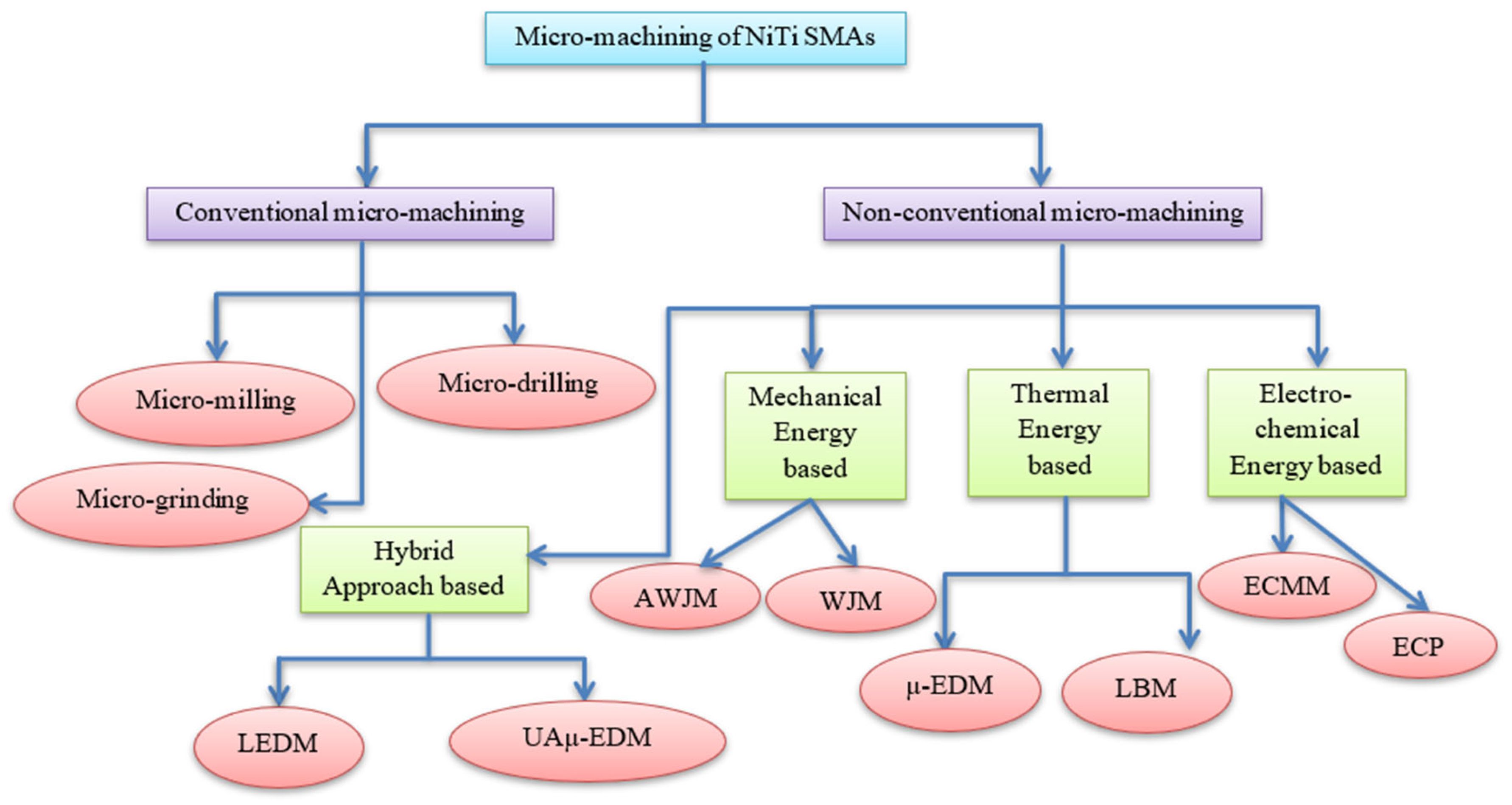
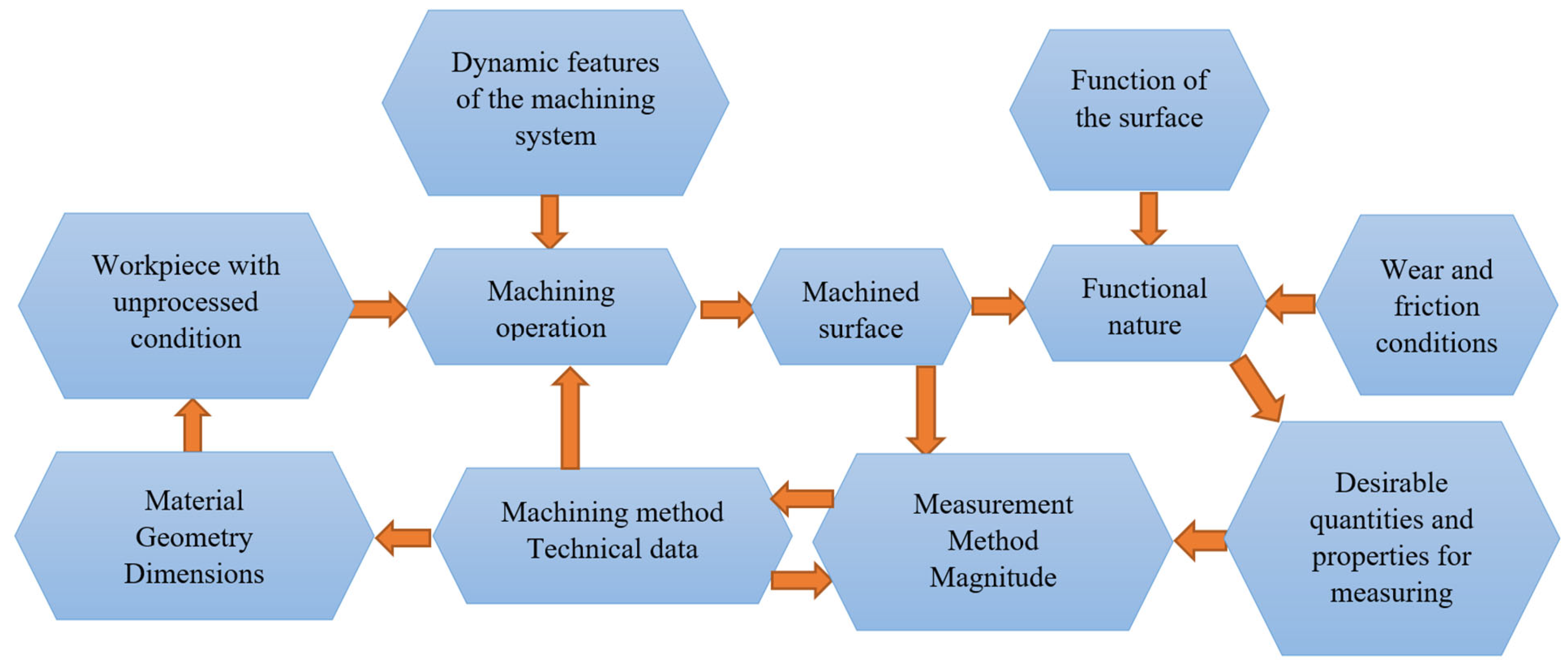
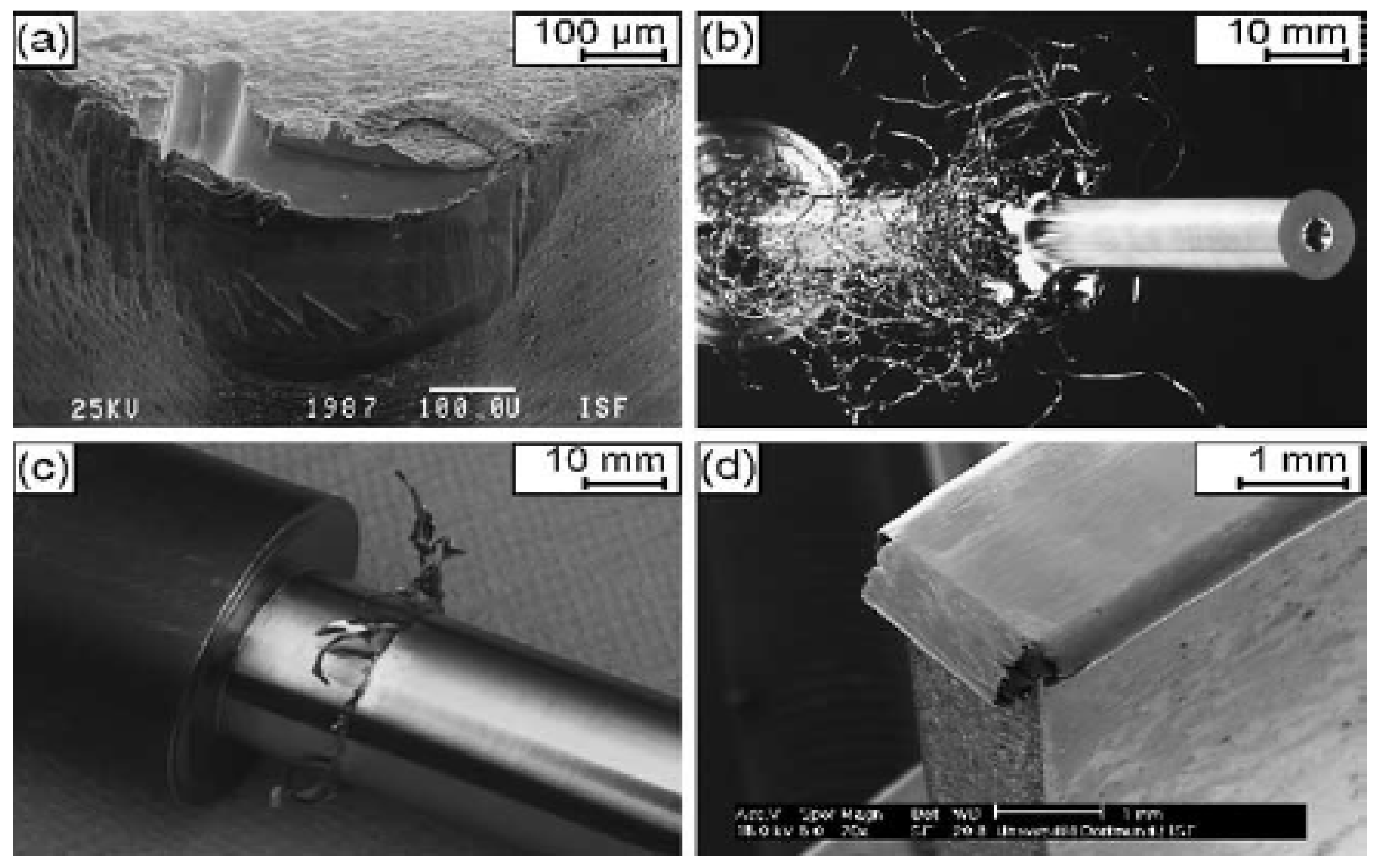
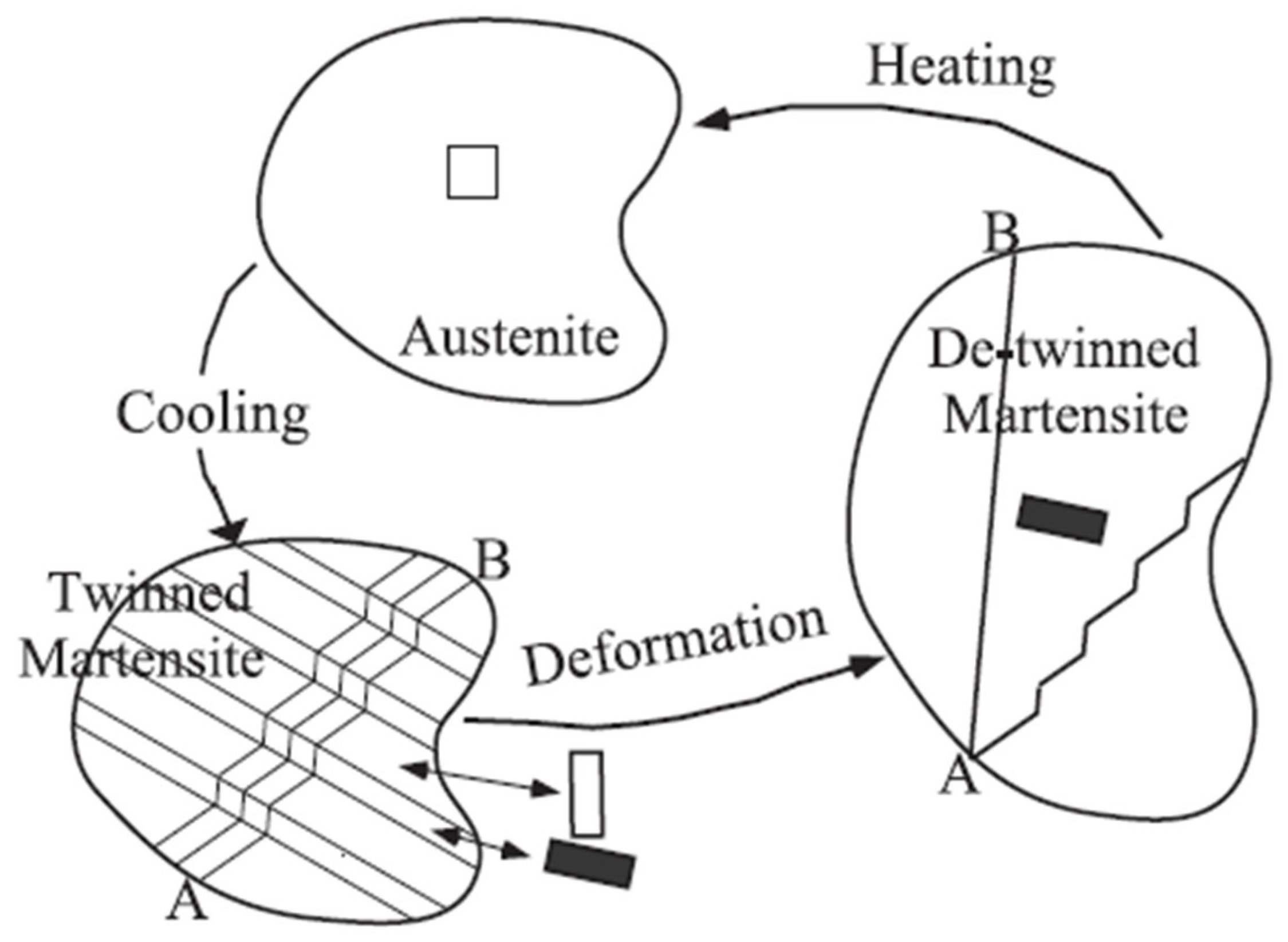


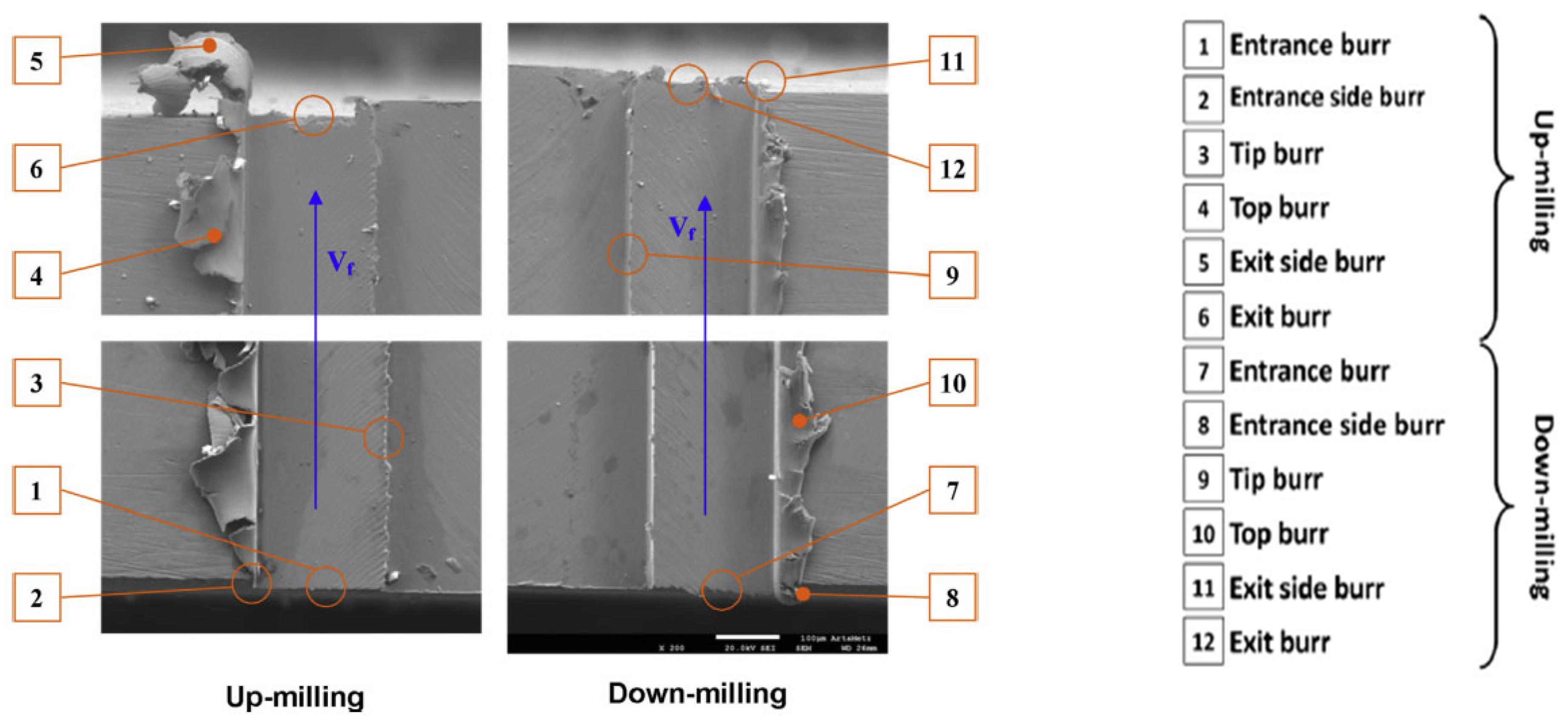
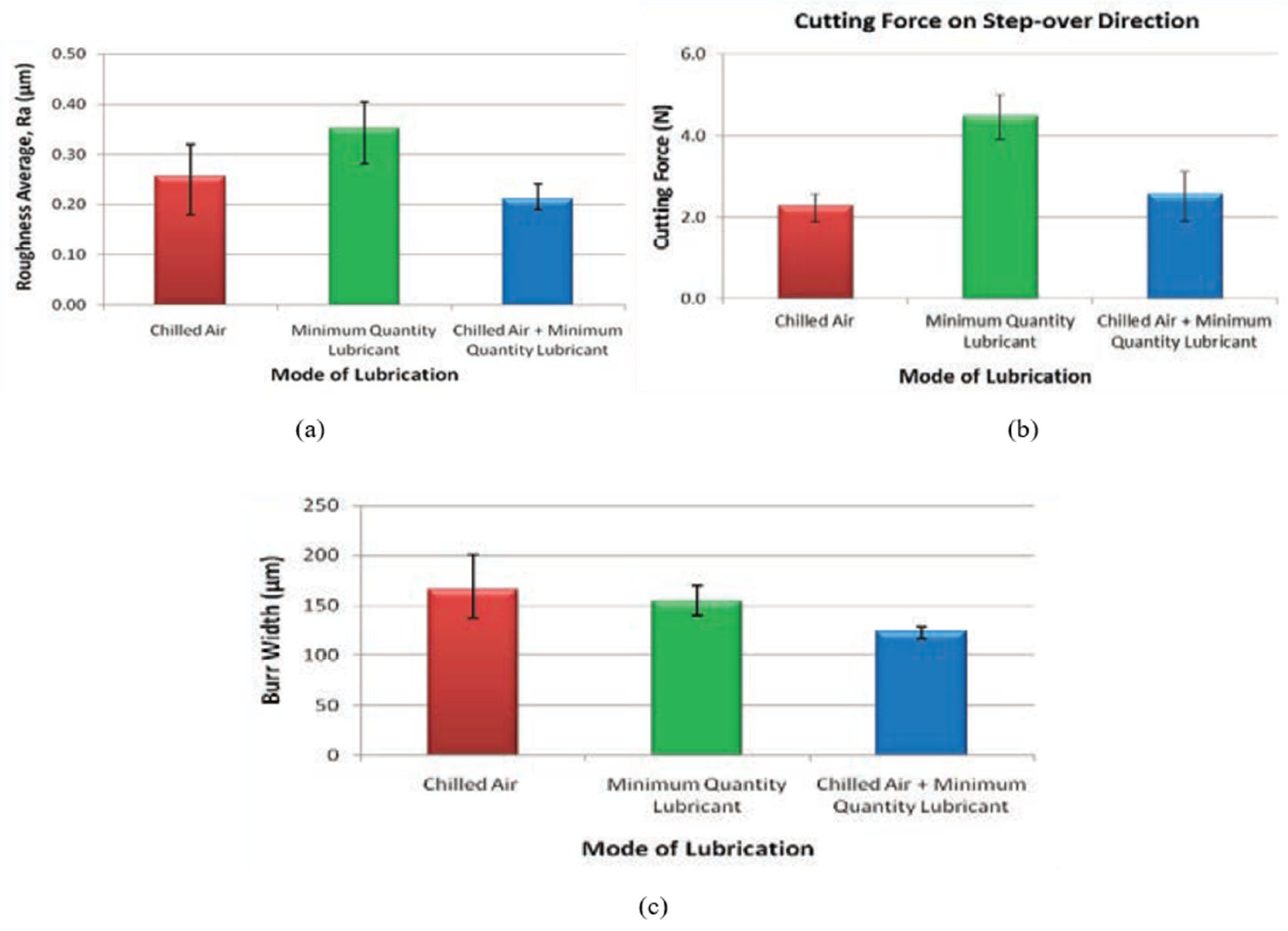
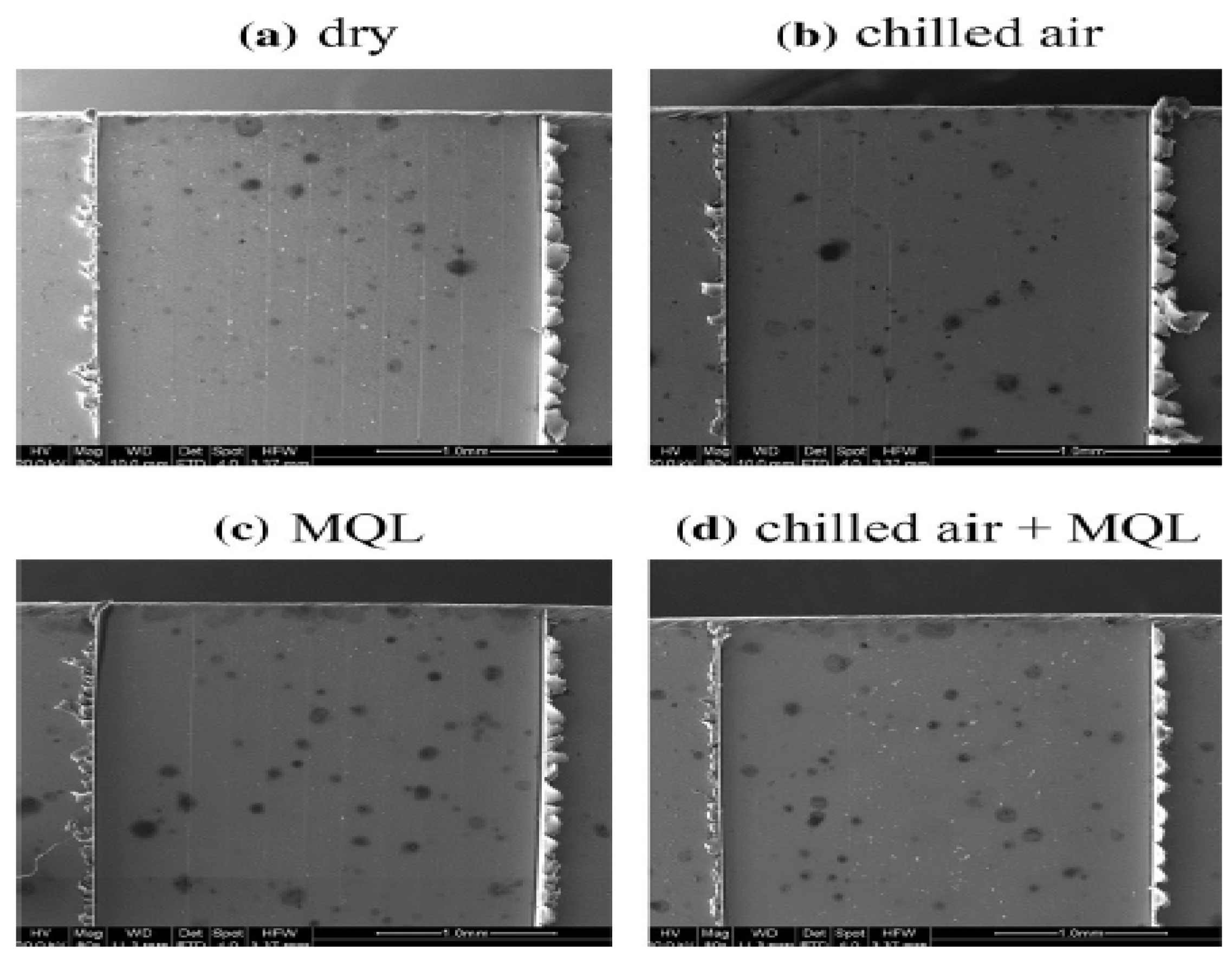
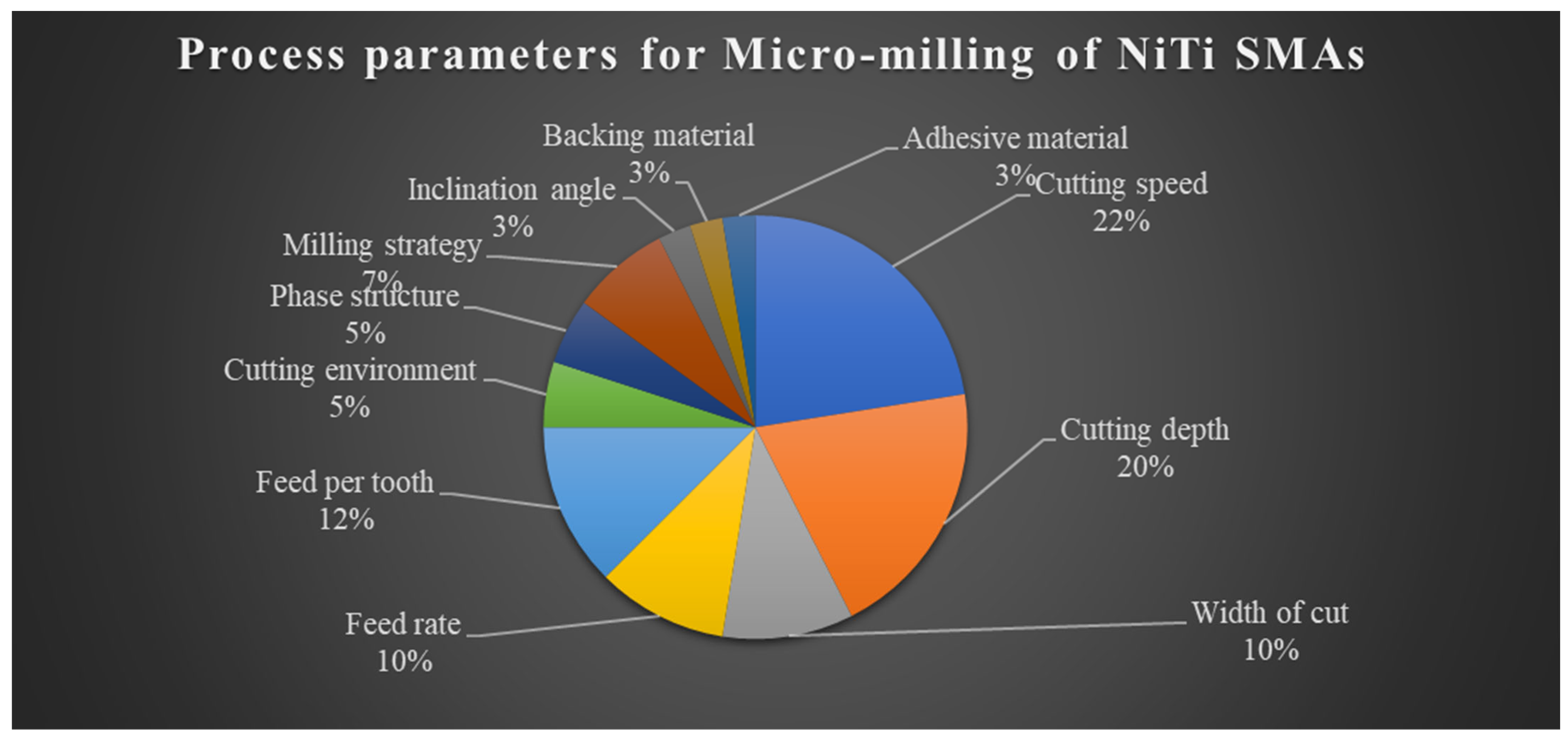
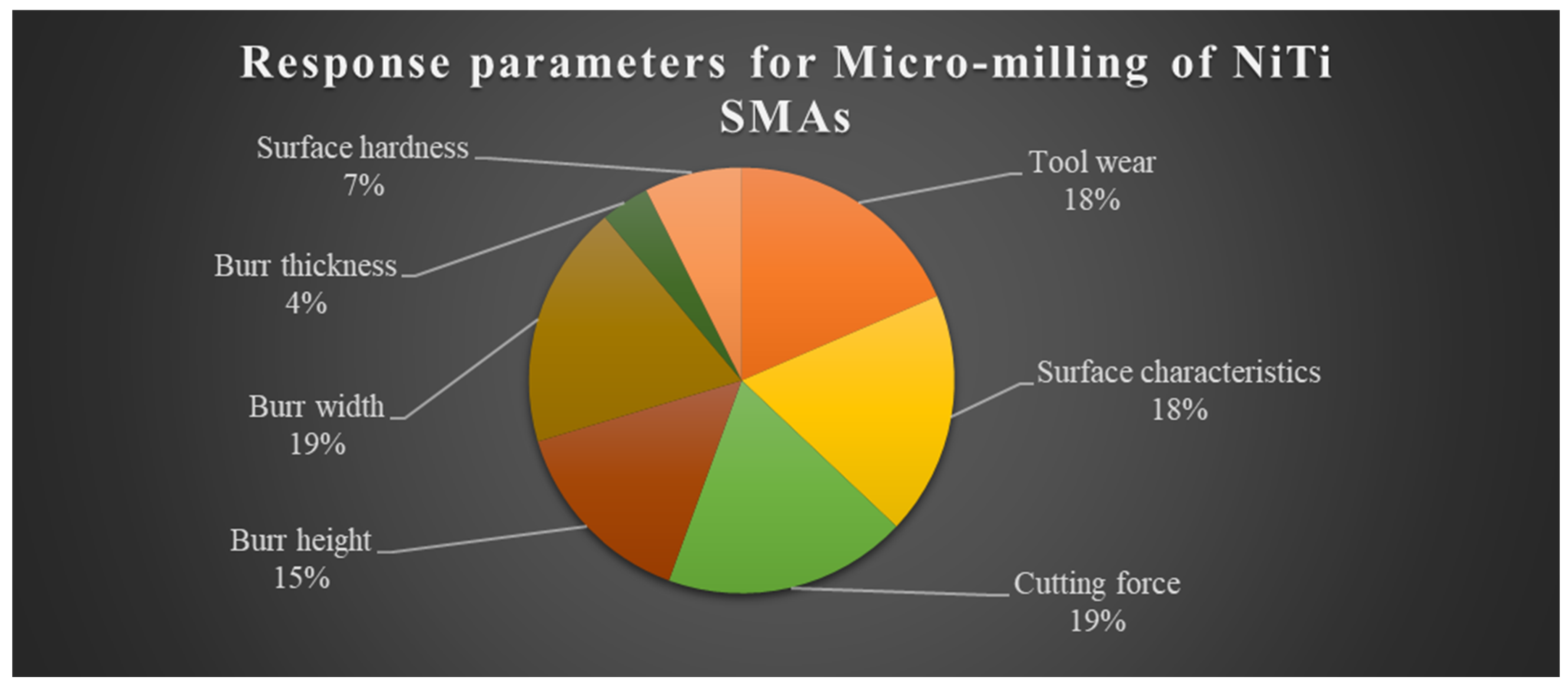

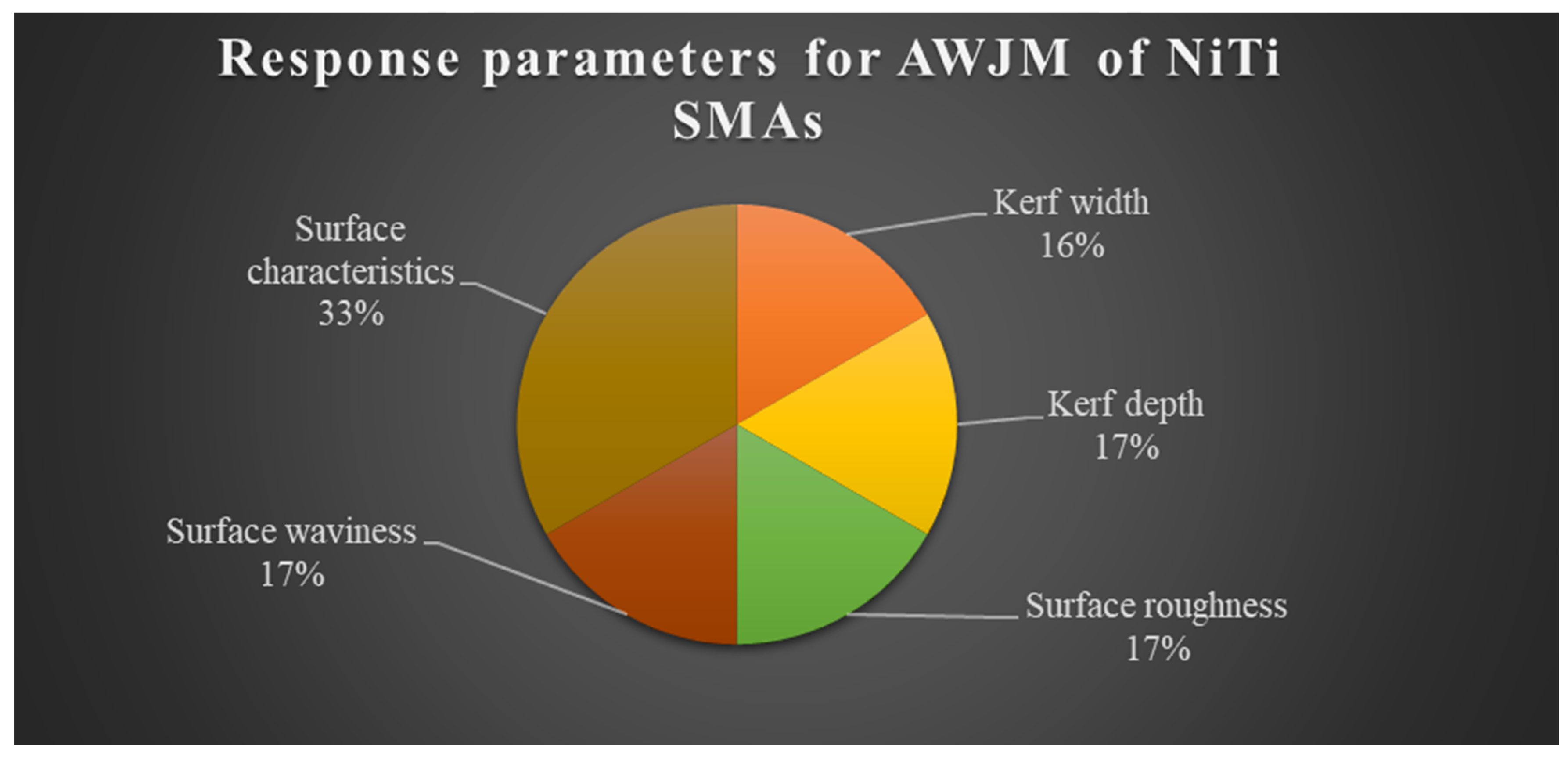
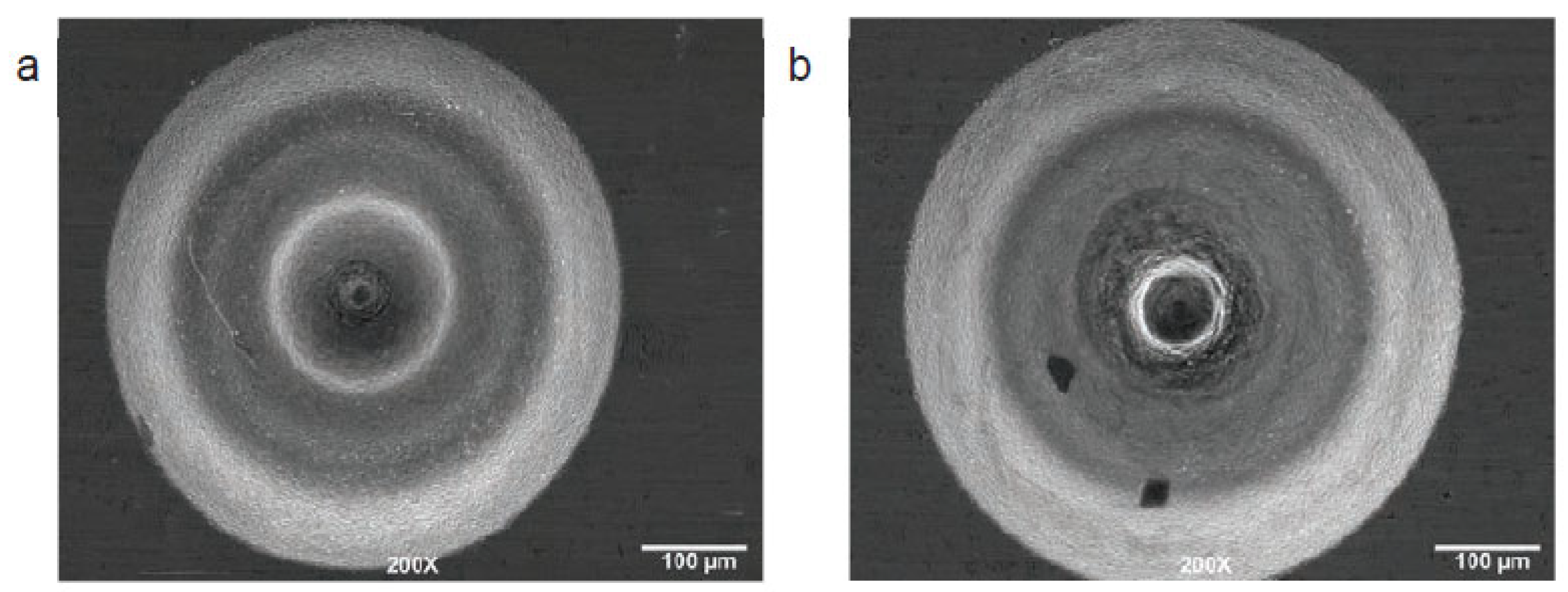
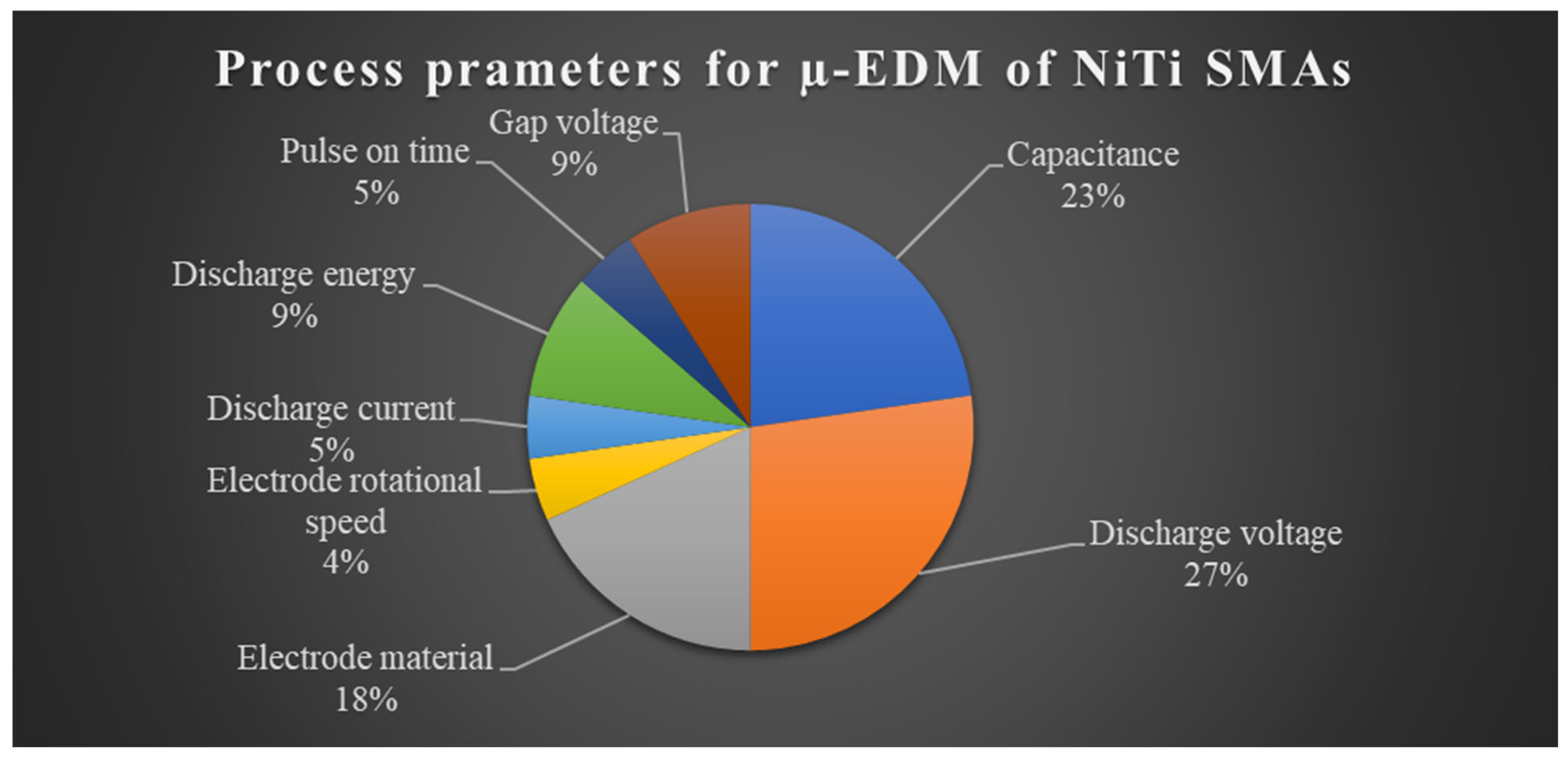

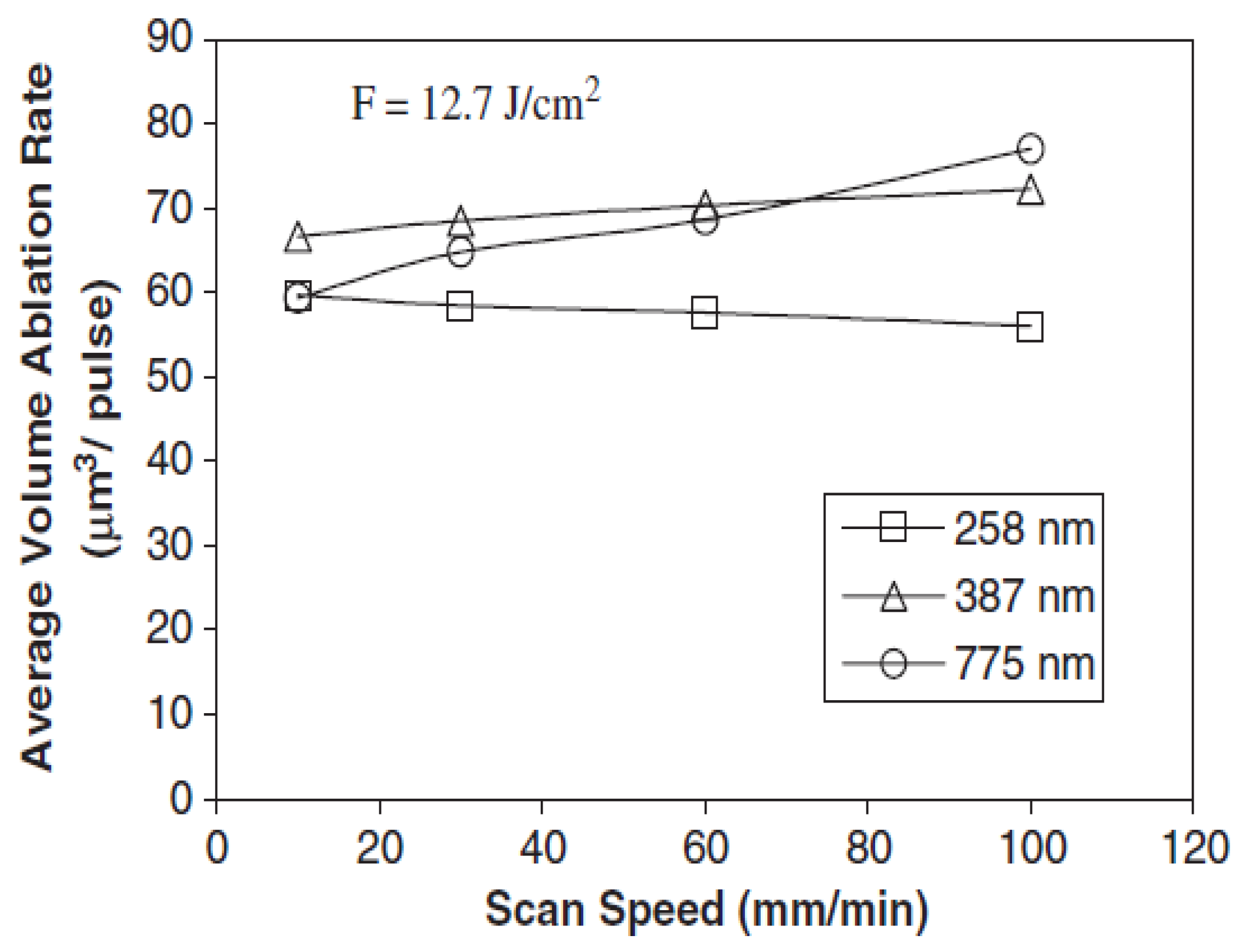
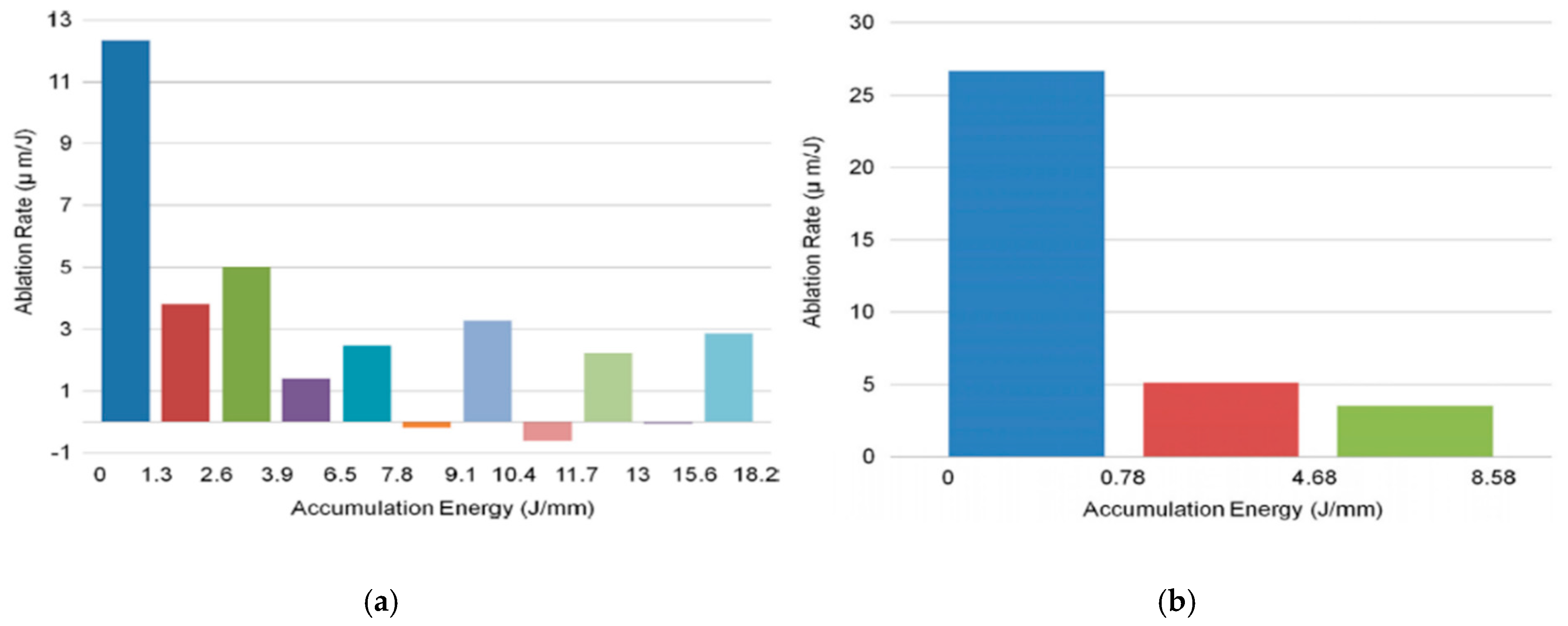

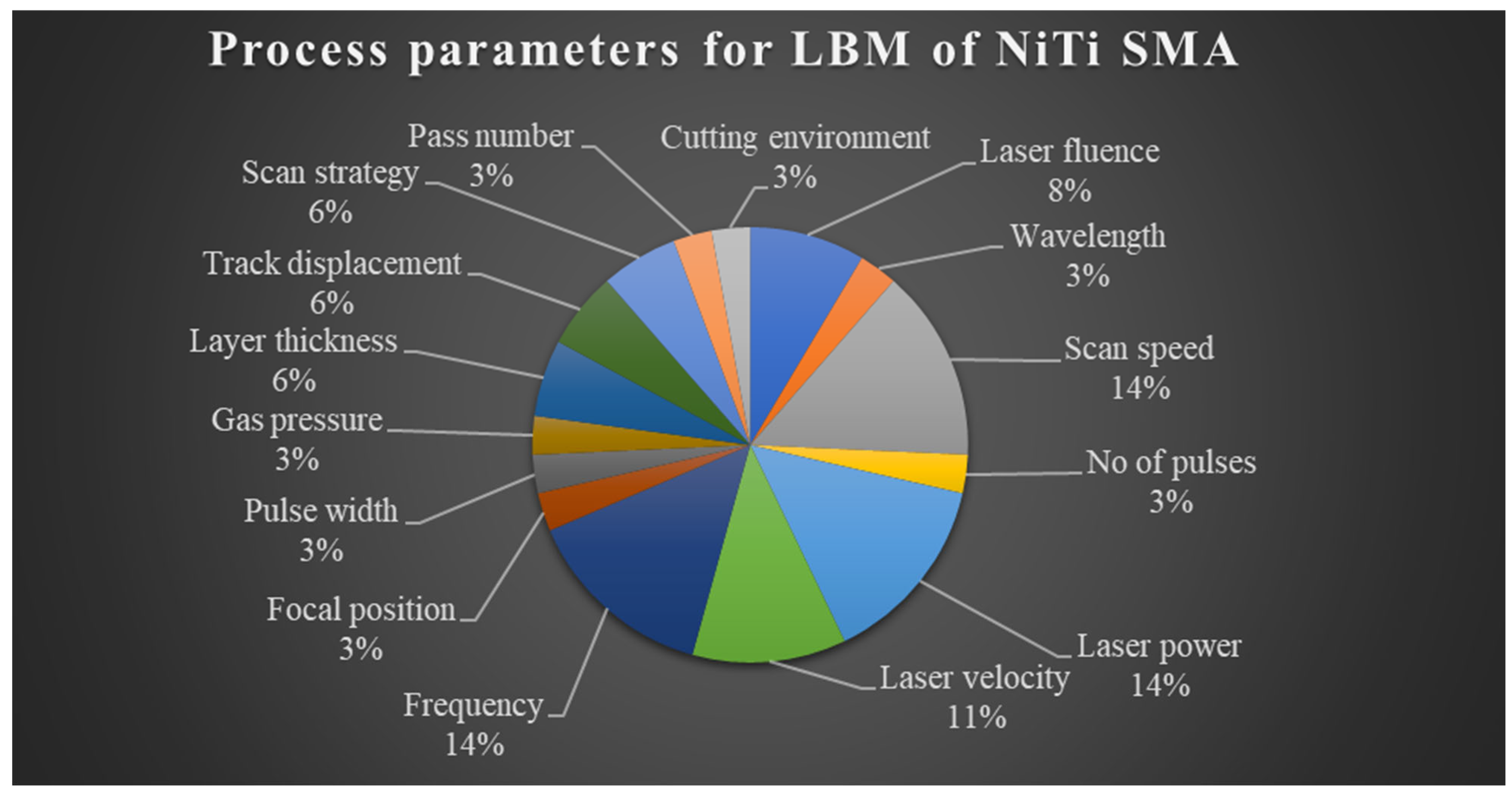
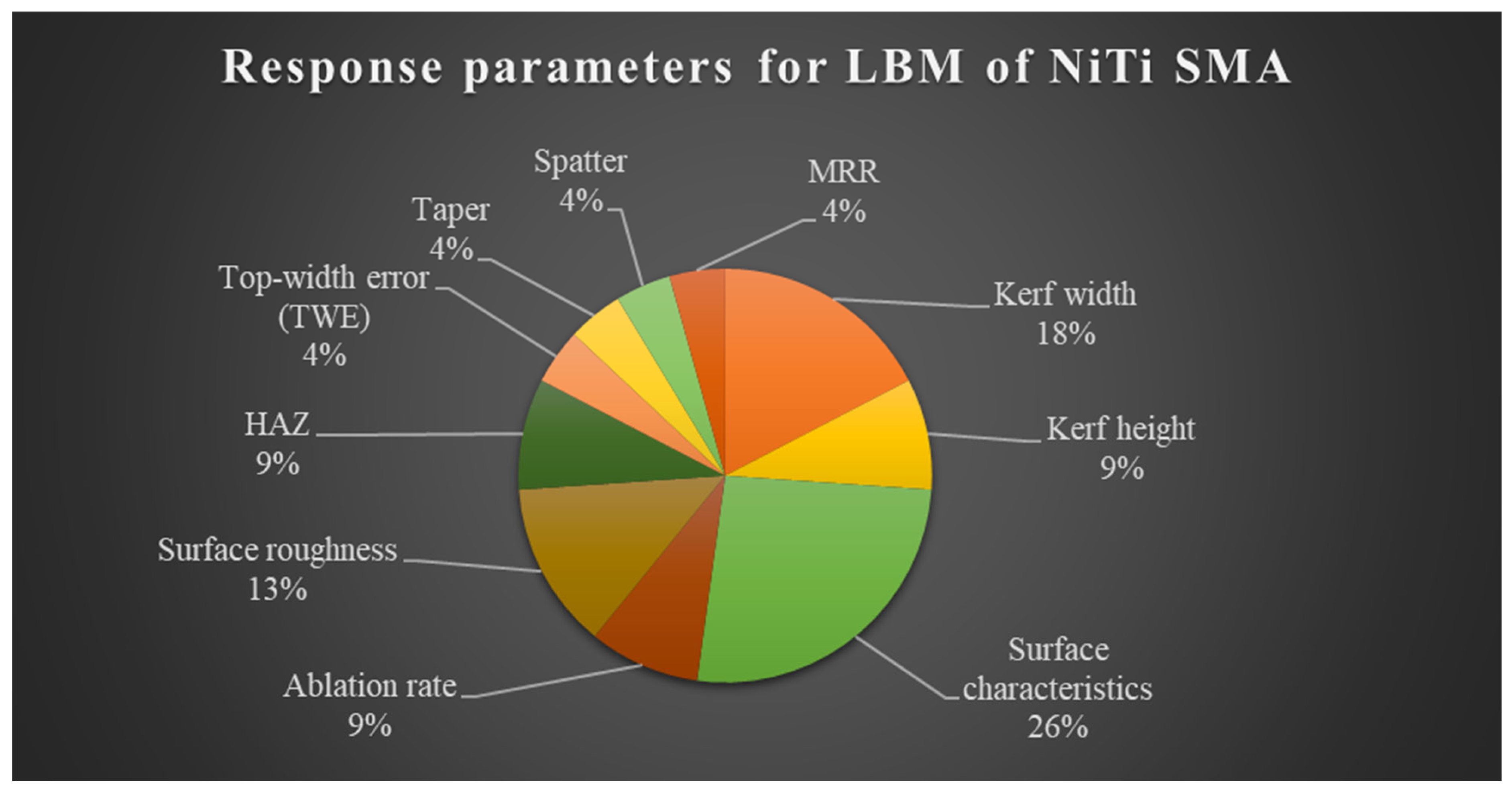
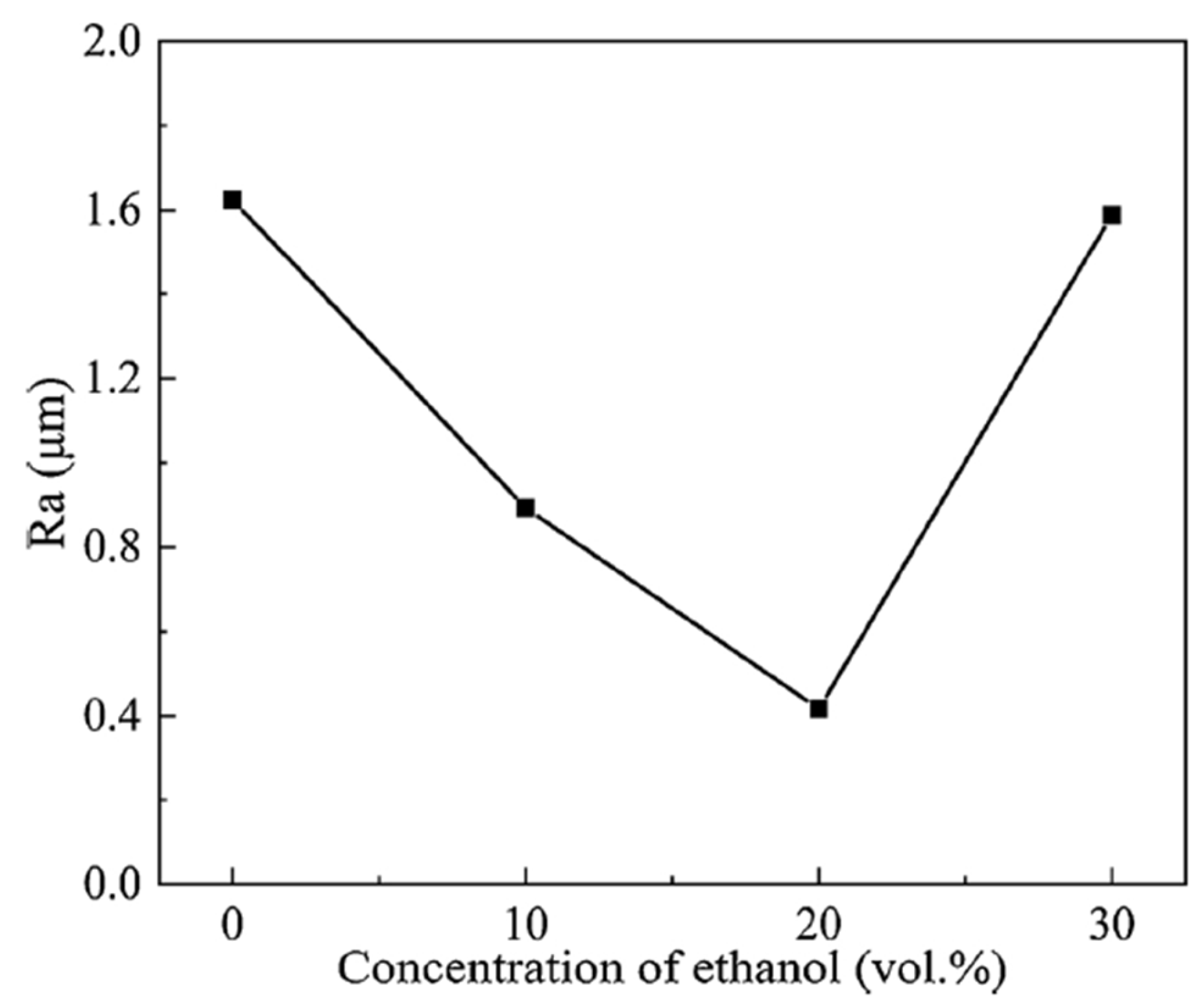
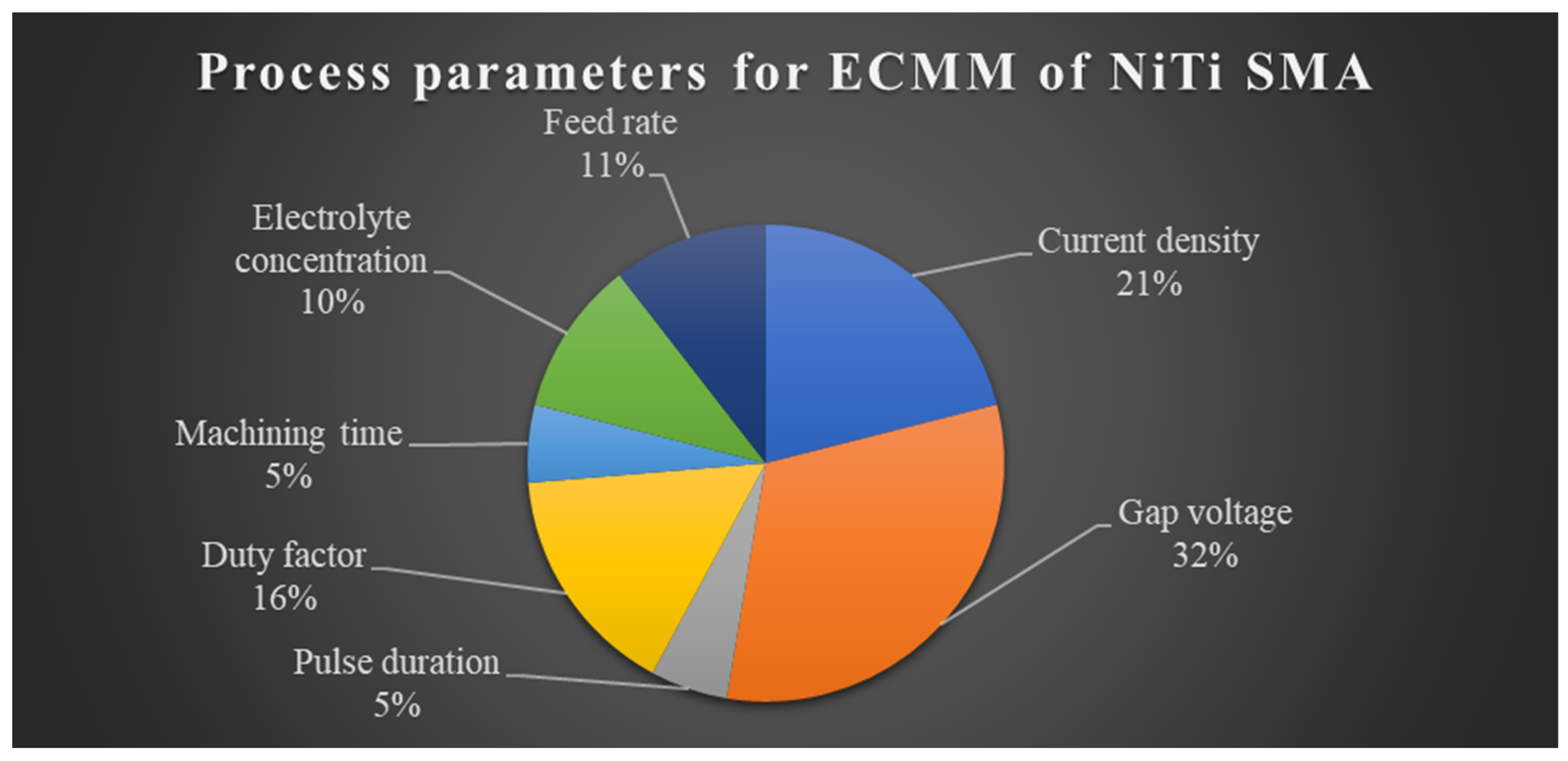
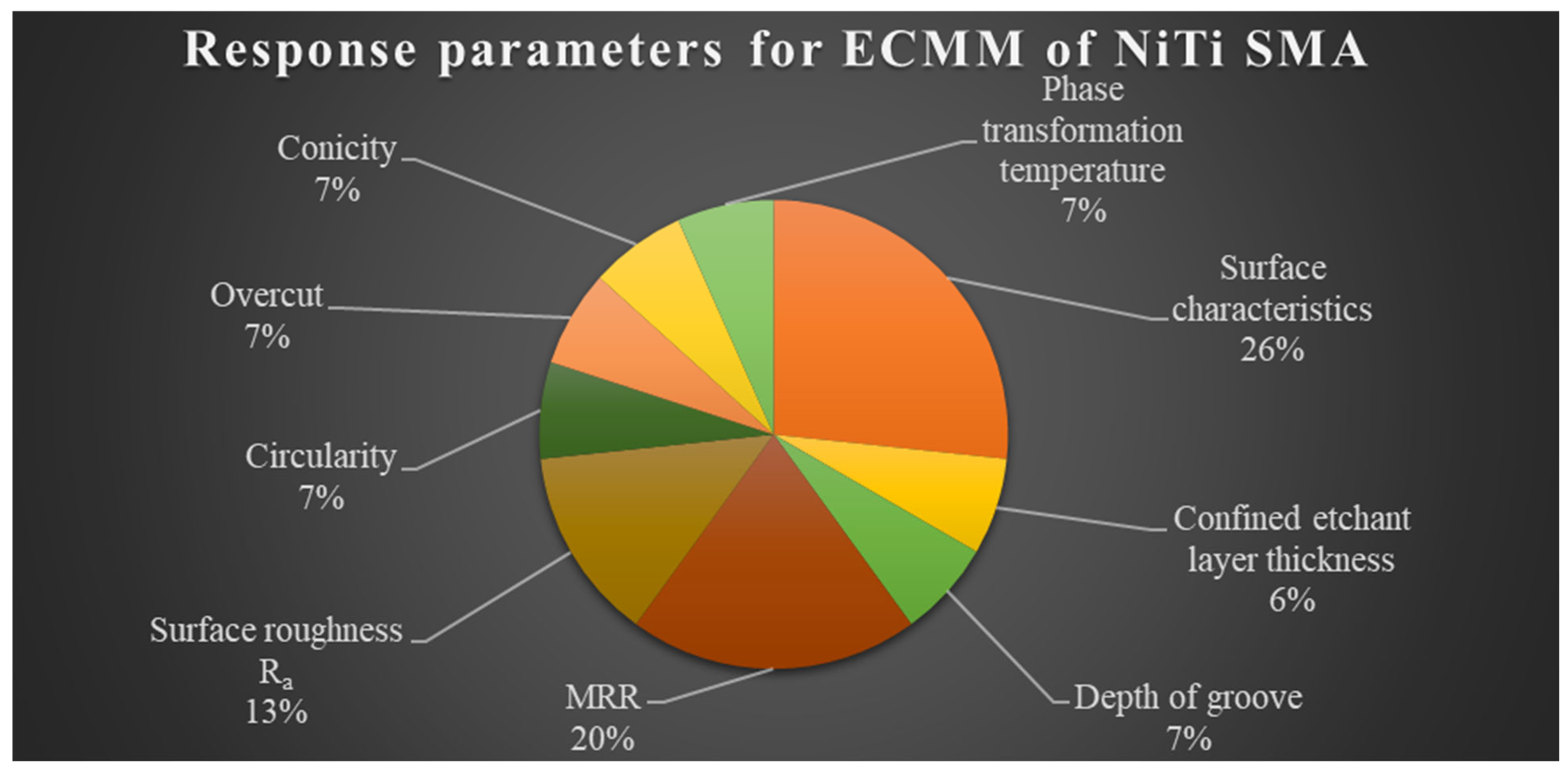
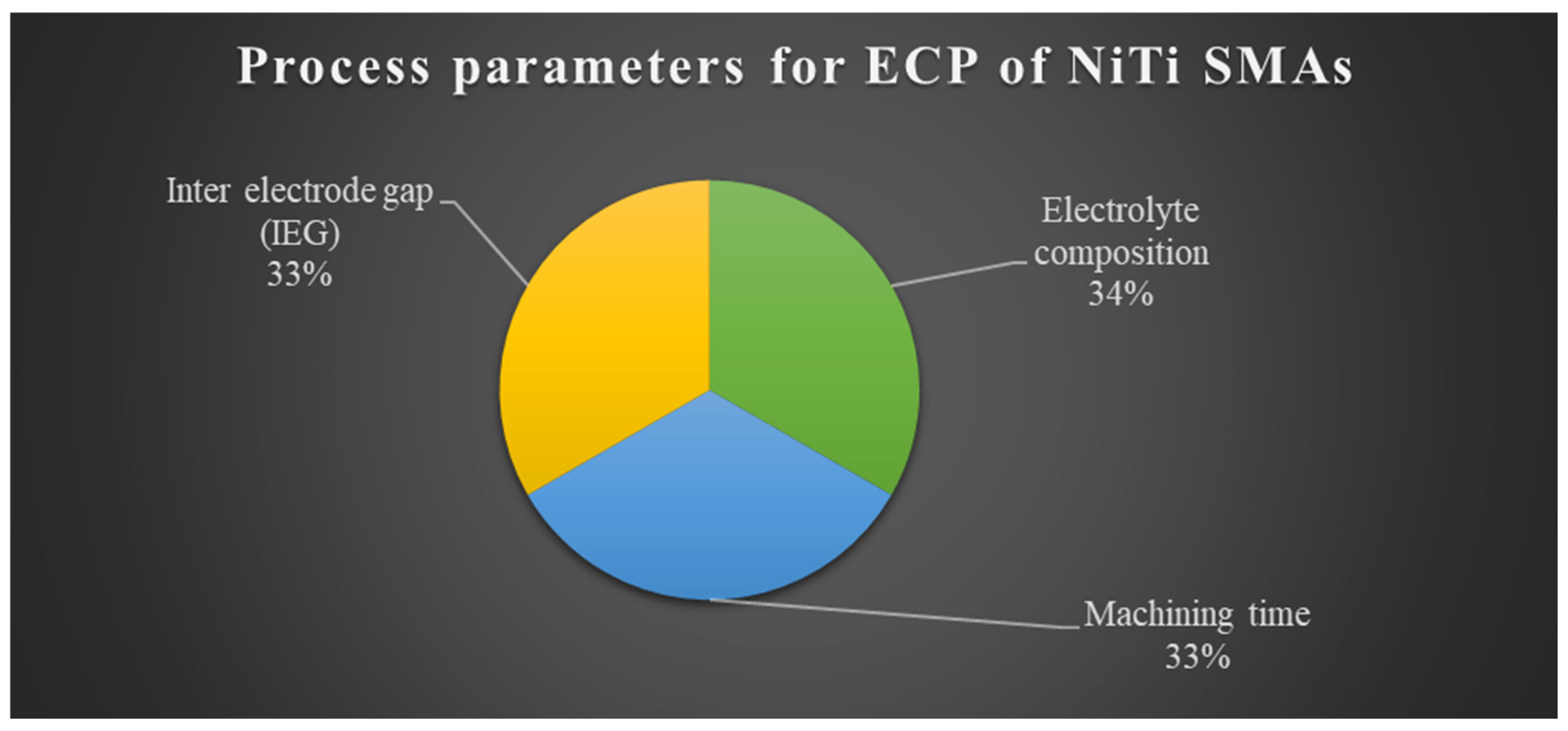
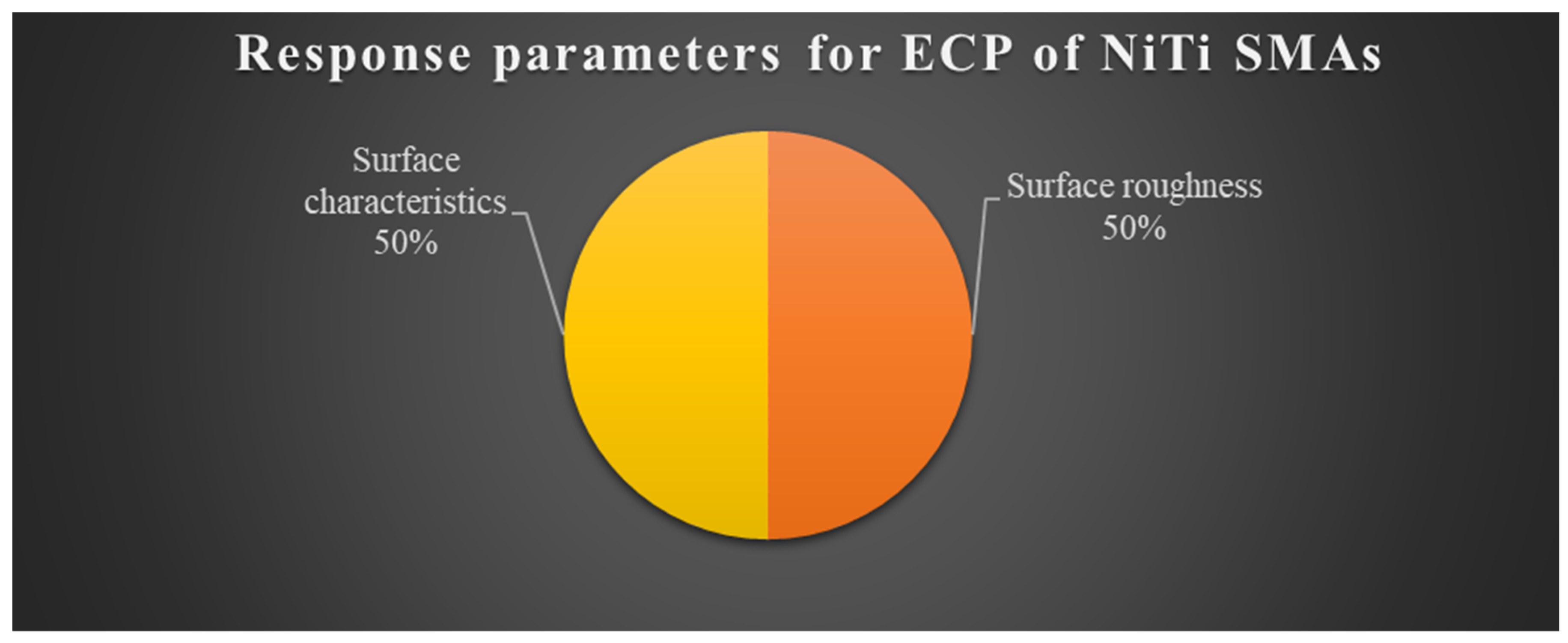

| Sr. No. | Authors Name | Fabrication Process | Material | Process Variables | Optimization Techniques |
|---|---|---|---|---|---|
| 1 | K. Weinert et al. (2008) [91] | Micro-milling | Ni50.8Ti49.2 | Cutting velocity, cutting depth, width of cut, feed per tooth, cutting environment | None |
| 2 | Dirk Biermann et al. (2009) [92] | Micro-milling | Ni49.9Ti49.7 and Ni50.1Ti50.3 | Cutting velocity, cutting depth, feed rate, width of cut, inclination angle and phase structure | Simulation software NCChip |
| 3 | D. Biermann et al. (2011) [93] | Micro-milling and Micro-drilling | Ni50.2Ti49.8 | Cutting velocity, cutting depth, feed rate, width of cut and milling strategy. | Simulation tool NCChip |
| 4 | M. Frotscher et al. (2007) [115] | Micro-milling and WJM | Ni50.9Ti49.1 | Cutting velocity, feed per tooth, depth of cut | None |
| 5 | R. Piquard et al. (2014) [95] | Micro-milling | NiTi | Milling strategy, cutting speed, cutting depth, phase structure and cutting width. | Taguchi’s ANOVA |
| 6 | Ramesh Kuppuswamy et al. (2015) [96] | Micro-milling | Ni50.6Ti49.4 | Cutting speed, feed per tooth and depth of cut | Taguchi’s S/N ratio and ANOVA |
| 7 | Zainal A Zailani et al. (2016) [97] | Micro-milling | Ni55Ti45 | Cutting velocity, depth of cut, feed rate and cutting environment | None |
| 8 | Zailani Zainal Abidin et al. (2020) [98] | Micro-milling | Ni55Ti45 | Cutting velocity, table feed rate, feed per tooth and depth of cut | None |
| Sr. No. | Authors | Process | Material | Process Parameters | Optimization Technique |
|---|---|---|---|---|---|
| 1 | Mohammed Sarvar Rasheed et al. (2012) [123] | µ-EDM | Ni55.8Ti44.2 | Capacitance, discharge voltage and electrode material | Taguchi’s S/N ratio and ANOVA |
| 2 | Mohammed Sarvar Rasheed et al. (2013) [124] | µ-EDM | Ni55.8Ti44.2 | Capacitance, discharge voltage and electrode material | Taguchi’s S/N ratio and ANOVA |
| 3 | Muhammad P. Jahan et al. (2017) [125] | µ-EDM | NiTi and Ti-6Al-4V | Discharge voltage, Capacitance, Electrode rotational speed | None |
| 4 | Mustufa Haider Abidi et al. (2017) [127] | µ-EDM | Ni55.8Ti44.2 | Capacitance, discharge voltage and electrode material | Taguchi’s GRA Coupled with PCA (GRA-PCA) |
| 5 | Mustufa H. Abidi et al. (2018) [128] | µ-EDM | Ni55.8Ti44.2 | Capacitance, discharge voltage, and electrode material. | Multi-objective genetic algorithm–II (MOGA-II) |
| 6 | Sagil James et al. (2018) [129] | µ-EDM | NiTi | Discharge voltage and discharge current. | None |
| 7 | Mwangi et al. (2018) [130] | µ-EDM | Ni55Ti45 | Discharge energy and gap voltage. | None |
| 8 | Mwangi et al. (2020) [131] | µ-EDM | Ni55Ti45 | Discharge energy, gap voltage and pulse on time. | None |
| 9 | K C Yung et al. (2004) [144] | LBM | Ni50.7Ti49.3 | Pass number, laser power, and laser velocity. | None |
| 10 | Chengde Li et al. (2006) [147] | LBM | Ni55.88Ti44.11 | Laser fluence, wavelength, and scan speed. | None |
| 11 | Nitin Uppal et al. (2008) [148] | LBM | NiTi | Laser fluence and no of pulses. | None |
| 12 | Adelaide Nespoli et al. (2014) [151] | LBM | Ni50.3Ti49.7 | Average power, process speed, and pulse frequency. | None |
| 13 | Chia-Hung Hung et al. (2015) [153] | LBM | Ni55.8Ti44.2 | Average power, scan speed, and focal position. | None |
| 14 | Lei Liu et al. 2016) [152] | LBM | Ni56Ti44 | Power, Pulse width, speed, gas pressure, and frequency. | None |
| 15 | Mohammed et al. (2020) [155] | LBM | NiTi | Frequency, scan speed, layer thickness, track displacement, and scan strategy. | Multi-objective genetic algorithm–II (MOGA-II) |
| 16 | Mohammed Sarvar Rasheed (2013) [154] | LBM and µ-EDM | Ni55.8Ti44.2 | Wavelength, scan speed, frequency, discharge voltage, and capacitance. | None |
| 17 | A. Al-Ahmari et al. (2020) [155] | LBM + µ-EDM | NiTi | Wavelength, scan speed, frequency, discharge voltage, and capacitance. | None |
| 18 | Maurer et al. (2012) [166] | ECMM | NiTi | Current density, gap voltage, pulse duration. | None |
| 19 | Xin-Zhou Ma et al. (2007) [167] | ECMM | NiTi | Electrolyte concentration, voltage, and current density. | None |
| 20 | Lee et al. (2010) [168] | ECP | Ni55Ti45 | Electrolyte composition, machining time, and inter-electrode gap (IEG). | None |
| 21 | Huang et al. (2003) [195] | Ultrasonic-assisted µ-EDM | Ni55Ti45 | Vibration amplitude, tool size, gap size, and frequency. | None |
| Sr. No. | Authors Name | Fabrication Process | Materials | Applications |
|---|---|---|---|---|
| 1 | M. Frotscher et al. (2007) [115] | Micro-milling | Ni50.9Ti49.1 | Micro-actuators |
| 2 | Jahan et al. (2017) [125] | µ-EDM | NiTi and Ti-6Al-4V | Biomedical |
| 3 | Yung et al. (2004) [144] | LBM | Ni50.7Ti49.3 | Biomedical |
| 4 | Nitin Uppal et al. (2008) [148] | LBM | NiTi | Biomedical |
| 5 | Lei Liu et al. (2016) [152] | LBM | Ni56Ti44 | Medical stents |
| 6 | Nespoli et al. (2014) [151] | LBM | Ni50.3Ti49.7 | Micro-actuators |
| Sr. No. | Name of the Authors | Fabrication Process | Material | Tool Material | Coating on the Tool | Coolants Used | Outcomes |
|---|---|---|---|---|---|---|---|
| 1 | K. Weinert et al. (2008) [91] | Micro-milling | Ni50.8Ti49.2 | Solid carbide | Thin TiAlN-layer | Ester oil MQL | Tool life increased by MQL. |
| 2 | Dirk Biermann et al. (2009) [92] | Micro-milling | Ni49.9Ti49.7 and Ni50.1Ti50.3 | Carbide | PVD TiAlN | Ester oil MQL | High width of cut and low depth of cut minimize tool wear. |
| 3 | D. Biermann et al. (2011) [93] | Micro-milling and Micro-drilling | Ni50.2Ti49.8 | Cemented carbide | TiAlN | Ester oil MQL | Twist drills gave the highest cutting depth over the single lip drill. |
| 4 | M. Frotscher et al. (2007) [115] | Micro-milling and WJM | Ni50.9Ti49.1 | Solid carbide | Thin TiAlN-layer. | Ester oil MQL | Shape accuracy is better in micro-milling than WJM. |
| 5 | Mathai et al. (2013) [94] | Micro-milling | Ni55Ti45 | carbide | None | None | Larger burrs formed during down-milling at a low spindle speed, high feed with a fragile adhesive bond and softer backing material. |
| 6 | R. Piquard et al. (2014) [95] | Micro-milling | NiTi | MX TOOL NS 225 | MUGEN coating. | Ester oil MQL | The phase structure and machining strategy reduce the burr dimension. |
| 7 | Ramesh Kuppuswamy et al. (2015) [96] | Micro-milling | Ni50.6Ti49.4 | Solid carbide | None | Johnson Baby Oil MQL | Phase transformation influences the machining characteristics. |
| 8 | Zainal A Zailani et al. (2016) [97] | Micro-milling | Ni55Ti45 | solid carbide | AlTiN | Chilled air and MQL | Chilled air and MQL improve surface integrity. |
| 9 | Zailani Zainal Abidin et al. (2020) [98] | Micro-milling | Ni55Ti45 | solid carbide | DURO-S (AlTiN) | Chilled air and MQL | Chiller air and MQL reduce the tool wear, cutting force and burr dimension. |
| Sr. No. | Authors Name | Fabrication Process | Material | Material Form | Machining Variables | Outcomes |
|---|---|---|---|---|---|---|
| 1 | Mohammed Sarvar Rasheed et al. (2012) [123] | µ-EDM | Ni55.8Ti44.2 | Rectangular plate | Capacitance, discharge voltage, and electrode material | Capacitance is the most significant parameter for MRR, TWR, and Ra. |
| 2 | Mohammed Sarvar Rasheed et al. (2013) [124] | µ-EDM | Ni55.8Ti44.2 | Rectangular plate | Capacitance, discharge voltage, and electrode material | Capacitance and discharge voltage are the significant factors for MRR, TWR, Ra, and circularity. |
| 3 | Muhammad P. Jahan et al. (2017) [125] | µ-EDM | NiTi and Ti-6Al-4V | Rectangular plate | Discharge voltage, Capacitance, and Electrode rotational speed | The formed oxide layer worked as a protective layer for Ni-Ti and Ti-6Al-4V alloy in their biomedical application |
| 4 | Mustufa Haider Abidi et al. (2017) [127] | µ-EDM | Ni55.8Ti44.2 | Rectangular plate | Capacitance, discharge voltage, and electrode material | Electrode material has the highest effect on overcut, surface roughness, and taper angle. |
| 5 | Mustufa H. Abidi et al. (2018) [128] | µ-EDM | Ni55.8Ti44.2 | Rectangular plate | Capacitance, discharge voltage, and electrode material. | The tungsten electrode achieved a good surface finish and low TWR. |
| 6 | Sagil James et al. (2018) [129] | µ-EDM | NiTi | Rectangular plate | Discharge voltage and discharge current. | The surface finish is improved, and TWR decreased during dry-µ-EDM. |
| 7 | Mwangi et al. (2018) [130] | µ-EDM | Ni55Ti45 | Sheets | Discharge energy and gap voltage. | High discharge energy has a large influence on altering the phase transition temperature of NiTi SMA in µ-EDM. |
| 8 | Mwangi et al. (2020) [131] | µ-EDM | Ni55Ti45 | Sheets | Discharge energy, gap voltage, and pulse on time. | The discharge energy that causes arcing must be avoided to increase the product life cycle of medical grade nitinol. |
| 9 | Kong et al. (2011) [114] | AWJM | Ni49.8Ti50.2 | Rectangular plate | Jet feed speed, pump pressure, SOD and abrasive mass flow rate. | The study recommended AWJ milling followed by water jet milling (for cleaning purposes) to machine NiTi SMA. |
| 10 | K C Yung et al. (2004) [144] | LBM | Ni50.7Ti49.3 | Sheet | Pass number, laser power, and laser velocity. | Single pulse energy with a larger number of passes gave a narrow kerf profile. |
| 11 | Chengde Li et al. (2006) [147] | LBM | Ni55.88Ti44.11 | Cold rolled sheet | Laser fluence, wavelength, and scan speed. | Laser fluences lower than 15 J/cm2 with high scan speed gave a good surface finish. |
| 12 | Haferkampa et al. (1999) [145] | LBM | NiTi | Wire | Wavelength, pulse duration, max pulse energy, and repetition rate. | Ti: sapphire laser can machine µ-hole in NiTi SMA with high power density and ultrashort pulses without affecting its SME property. |
| 13 | Nitin Uppal et al. (2008) [148] | LBM | NiTi | Sheet | Laser fluence and no of pulses. | Low heat accumulation of nitinol gave an advantage in micro-machining. |
| 14 | Adelaide Nespoli et al. (2014) [151] | LBM | Ni50.3Ti49.7 | Sheet | Average power, process speed, and pulse frequency. | Pickling is the most effective technique that improves the µ-channel. |
| 15 | Muhammad et al. (2012) [149] | LBM | Ni55Ti45 | Tube | Laser fluence and cutting speed. | Cut surface under underwater conditions is free from recast layer and debris particles. |
| 16 | Chia-Hung Hung et al. (2015) [153] | LBM | Ni55.8Ti44.2 | Tube | Average power, scan speed, and focal position. | Improved machining path doubles the ablation rate and reduces the accumulated energy. |
| 17 | Lei Liu et al. (2016) [152] | LBM | Ni56Ti44 | Tube | Power, Pulse width, speed, gas pressure, and frequency. | Mixed topography, along with a high striation ratio, gave a better surface finish. |
| 18 | Mohammed et al. (2020) [155] | LBM | NiTi | Sheet | Frequency, scan speed, layer thickness, track displacement, and scan strategy. | High frequency, medium speed, low layer thickness, and track displacement gave maximum MRR and better surface finish of NiTi SMAs. |
| 19 | Muralidharan et al. (2021) [156] | LBM | NiTi | Plate | Laser power, frequency, and speed. | Surface roughness was decreased with the increase in cutting speed and the enhancement of laser power raises the surface roughness as well. |
| 20 | Mohammed Sarvar Rasheed (2013) [154] | LBM and µ-EDM | Ni55.8Ti44.2 | Rectangular plate | Wavelength, scan speed, frequency, discharge voltage, and capacitance. | The quality of the micro-holes produced by µ-EDM was better than LBM. |
| 21 | A. Al-Ahmari et al. (2016) [155] | LBM + µ-EDM | NiTi | Sheet | Wavelength, scan speed, frequency, discharge voltage, and capacitance. | Huge improvement took the place of the micro-holes produced by LEDM compared to the LBM process. |
| 22 | Maurer et al. (2012) [166] | ECMM | NiTi | Sheet | Current density, gap voltage, pulse duration. | The application of ultrashort pulses produced Strain-free, heat-free, and mask-free surfaces in the ECMM process. |
| 23 | Lee et al. (2010) [168] | ECMM | Ni56Ti44 | Sheet | Current density, duty factor, and machining time. | The depth of the micro-grooves is increased with current density and duty factor. |
| 24 | Xin-Zhou Ma et al. (2007) [167] | ECMM | NiTi | Foil | Electrolyte concentration, voltage, and current density. | Fabrication of complex three-dimensional micropatterns or nano-patterns is achieved successfully by ECMM. |
| 25 | Ao et al. (2020) [169] | ECMM | NiTi | Sheet | Ethanol concentration in electrolyte, applied voltage, and current density. | Machining accuracy and surface quality are improved at 20 vol% ethanol mixed electrolyte solution. |
| 26 | Mouliprasanth et al. (2021) [170] | ECMM | NiTi | Sheet | Voltage, duty cycle, and feed rate. | NPE gave higher MRR, and improved geometrical features were achieved by PE.Duty cycle was found to be the most influential parameter for both cases. |
| 27 | Mouliprasanth et al. (2021) [171] | ECMM | NiTi | Sheet | Voltage, duty cycle, and feed rate. | CPE gave less surface roughness and better surface integrity compared to the PE and NPE as it has both the PE and NPE. |
| 28 | Saxena et al. (2021) [172] | ECMM | NiTi | Plate | Voltage | The SMA properties remain unaffected after the laser-assisted ECMM process. |
| 29 | Lee et al. (2011) [182] | ECP | Ni55Ti45 | Rectangular plate | Electrolyte composition, machining time, and inter-electrode gap (IEG). | Acid electrolyte is found to be faster compared to the neutral electrolyte for ECP on the NiTi plate. |
| 30 | Huang et al. (2003) [195] | Ultrasonic-assisted µ-EDM | Ni55Ti45 | Rectangular plate | Vibration amplitude, tool size, gap size, and frequency. | Induction of ultrasonic vibration increased the machining efficiency by 60%. |
| Machining Process | MRR | Ra | Tool Wear | Burr Width | Burr Height | Biocompatibility |
|---|---|---|---|---|---|---|
| Micro-milling | 1.1–3.15 mm3/min | 0.2–0.35 µm | 0.2–1.6 mm | 80–160 µm | 150–250 µm | NA |
| Micro-grinding | × | 0.15 µm | × | × | × | NA |
| AWJM | × | 5.3–5.9 µm | × | × | × | NA |
| µ-EDM | (1.3 × 10−4)–(12.6 × 10−4) mm3/min | 0.10–0.11 µm | (0.46 × 10−4)–(4.64 × 10−4) mm3/min | × | × | Yes |
| LBM | 0.0005–0.0025 mm3/min | 1.5–4 µm | × | × | × | Yes |
| ECMM | × | 0.4–2 µm | × | × | × | Yes |
| ECP | × | 0.01–0.05 µm | × | × | × | Yes |
| Sr. No. | Authors Name | Fabrication Process | Material | Response Parameters | Ms (ºC) | Mf (ºC) | As (ºC) | Af (ºC) |
|---|---|---|---|---|---|---|---|---|
| 1 | K. Weinert et al. (2008) [91] | Micro-milling | Ni50.8Ti49.2 | Burr dimension and chip formation. | −37 | −103 | −46 | 13 |
| 2 | Dirk Biermann et al. (2009) [92] | Micro-milling | Ni49.9Ti49.7 and Ni50.1Ti50.3 | Surface morphology and burr characteristics. | −37 | −103 | −45 | 13 |
| 3 | D. Biermann et al. (2011) [93] | Micro-milling and Micro-drilling | Ni50.2Ti49.8 | Surface morphology, drilling depth and burr formation. | 49 | 12 | 64 | 100 |
| 4 | R. Piquard et al. (2014) [95] | Micro-milling | NiTi | Burr characteristics. | 40.3 | 15.4 | 59 | 84.5 |
| 5 | Ramesh Kuppuswamy et al. (2015) [96] | Micro-milling | Ni50.6Ti49.4 | Cutting force and burr size. | 20.60 | 0.00 | 0.50 | 22.80 |
| 6 | Zainal A Zailani et al. (2016) [97] | Micro-milling | Ni55Ti45 | Cutting force, burr dimension, flank wear, surface roughness and surface morphology. | 37.85 | −1.39 | 39.90 | 73.84 |
| 7 | Zailani Zainal Abidin et al. (2020) [98] | Micro-milling | Ni55Ti45 | Burr dimension, cutting force, surface roughness, tool wear and nano hardness. | 37 | 21 | 47 | 67 |
| 8 | Adelaide Nespoli et al. (2014) [151] | LBM | Ni50.3Ti49.7 | Surface characteristics, phase transformation temperature, and recovered strain. | 19 | −39 | 26 | 51 |
| Sr. No. | Authors | Micro-Machining Process | Effect on the Post Machining Phase Transition Temperature |
|---|---|---|---|
| 1 | Kuppuswamy et al. (2015) [96] | Micro-milling | Phase transition took place from austenite to martensite at a cutting speed of 15 m/min. |
| 2 | Mwangi et al. (2018) [130] | Micro-EDM | The increase in discharge energy significantly shifted the Ms and reduces the thermal hysteresis through R phase transformation. |
| 3 | Mwangi et al. (2020) [131] | Micro-EDM | Higher discharge energy with no arcing condition provides a small reduction in the thermal hysteresis and provides higher MRR without part failure. |
Disclaimer/Publisher’s Note: The statements, opinions and data contained in all publications are solely those of the individual author(s) and contributor(s) and not of MDPI and/or the editor(s). MDPI and/or the editor(s) disclaim responsibility for any injury to people or property resulting from any ideas, methods, instructions or products referred to in the content. |
© 2025 by the authors. Licensee MDPI, Basel, Switzerland. This article is an open access article distributed under the terms and conditions of the Creative Commons Attribution (CC BY) license (https://creativecommons.org/licenses/by/4.0/).
Share and Cite
Dutta, S.; Sarma, D.K.; Vora, J.; Chaudhari, R.; Bhowmik, A.; Samal, P.; Khanna, S. A State-of-the-Art Review on Micro-Machining of Nitinol Shape Memory Alloys and Optimization of Process Variables Considering the Future Trends of Research. J. Manuf. Mater. Process. 2025, 9, 183. https://doi.org/10.3390/jmmp9060183
Dutta S, Sarma DK, Vora J, Chaudhari R, Bhowmik A, Samal P, Khanna S. A State-of-the-Art Review on Micro-Machining of Nitinol Shape Memory Alloys and Optimization of Process Variables Considering the Future Trends of Research. Journal of Manufacturing and Materials Processing. 2025; 9(6):183. https://doi.org/10.3390/jmmp9060183
Chicago/Turabian StyleDutta, Souradeep, Deba Kumar Sarma, Jay Vora, Rakesh Chaudhari, Abhijit Bhowmik, Priyaranjan Samal, and Sakshum Khanna. 2025. "A State-of-the-Art Review on Micro-Machining of Nitinol Shape Memory Alloys and Optimization of Process Variables Considering the Future Trends of Research" Journal of Manufacturing and Materials Processing 9, no. 6: 183. https://doi.org/10.3390/jmmp9060183
APA StyleDutta, S., Sarma, D. K., Vora, J., Chaudhari, R., Bhowmik, A., Samal, P., & Khanna, S. (2025). A State-of-the-Art Review on Micro-Machining of Nitinol Shape Memory Alloys and Optimization of Process Variables Considering the Future Trends of Research. Journal of Manufacturing and Materials Processing, 9(6), 183. https://doi.org/10.3390/jmmp9060183









